City of Bloomington Tree Care Manual
A Handbook for the Care of Urban Trees

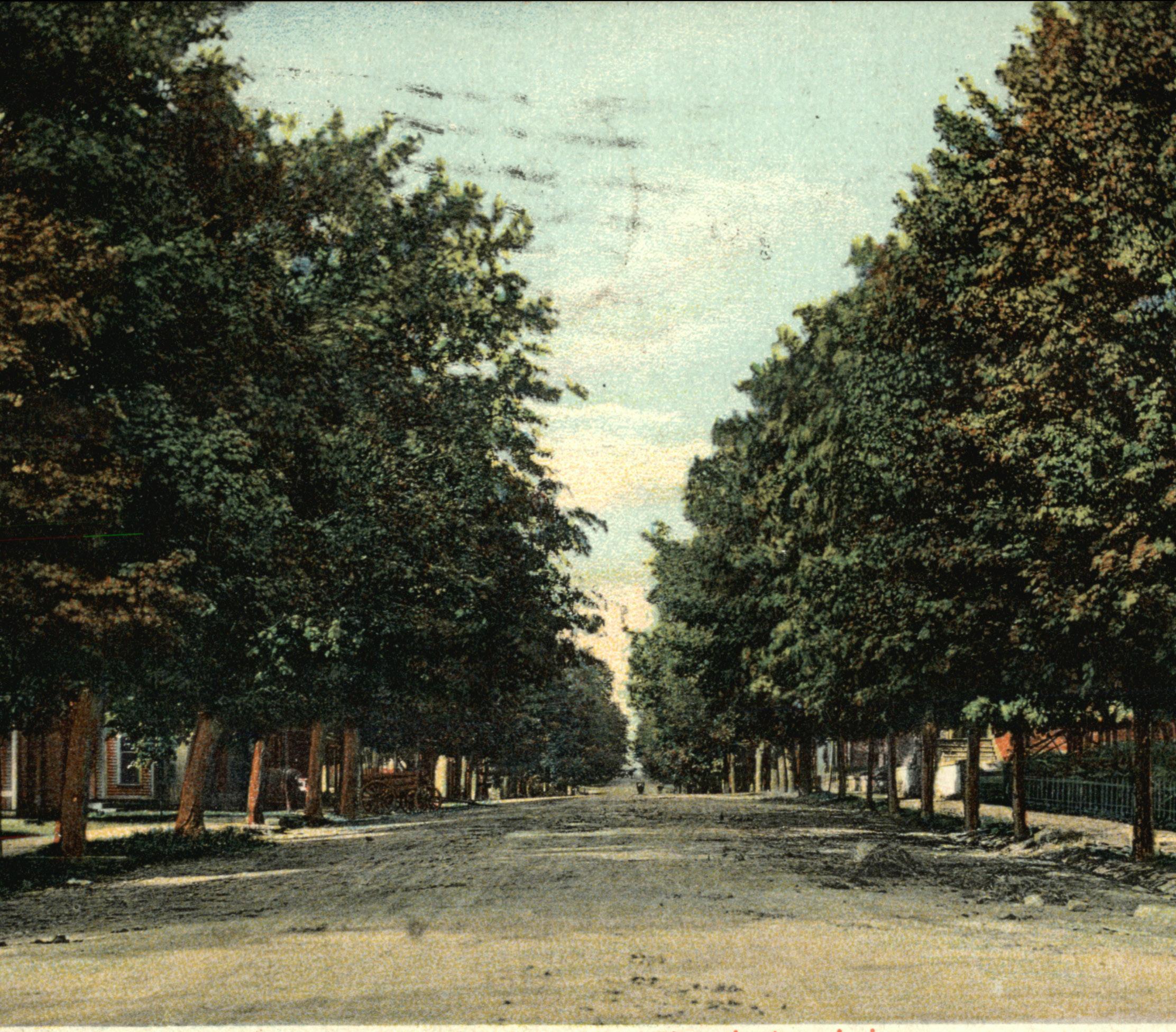
The City of Bloomington Tree Commission
Text for this educational booklet was originally authored by Gina A. Darnell and Lee Huss, updated language and practices provided by the Bloomington Tree Commission and Haskell Smith, City of Bloomington Urban Forester. Fifth Edition, 2024
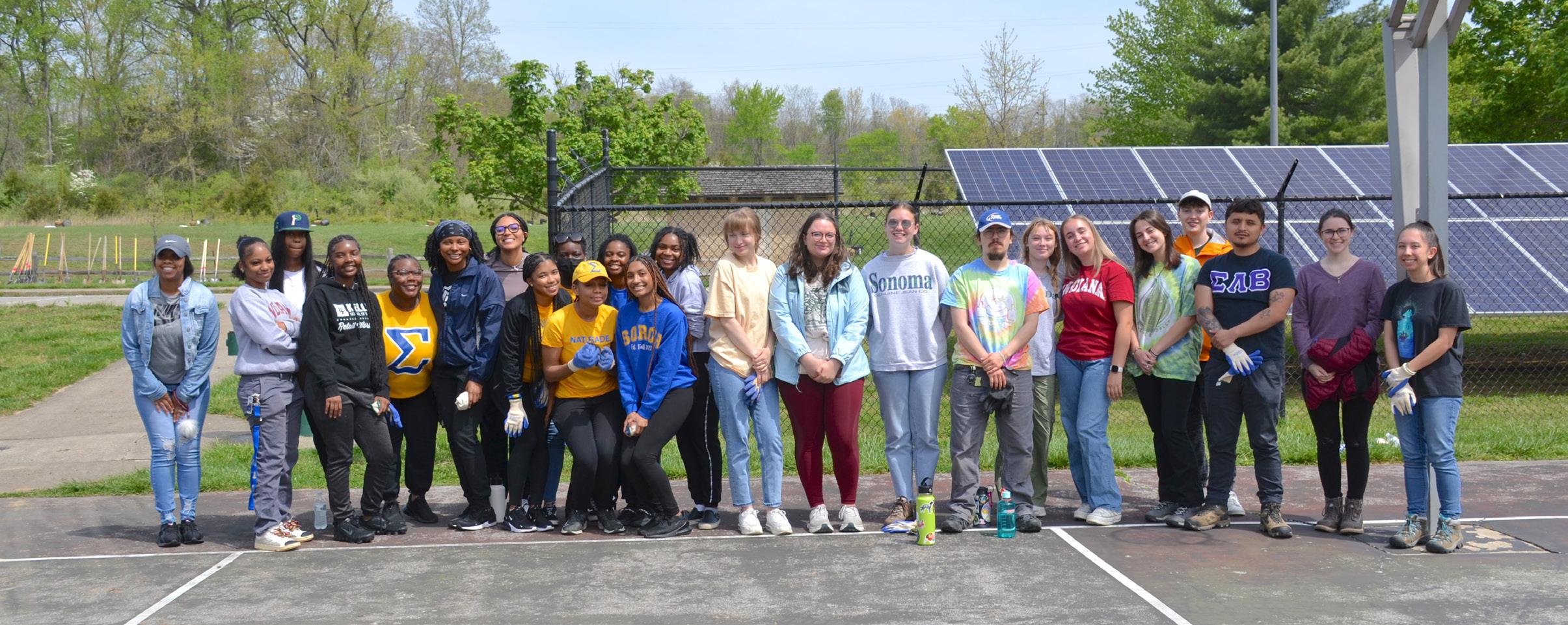
2 Bloomington Tree Care Manual, Fifth Edition 2024 Table of Contents Implementation of Tree Care Standards ....................4 Adopted Policies Regarding Tree Care ......................4 What is Urban Forestry, and What do we Maintain? ......................................5 Obtaining a Tree Work Permit.....................................5 Recommended Standards of Tree Care ......................6 Safety Statement, and Choosing an Arborist ..................... 6 Tips for Choosing and Planting ............................................... 6 Selecting the Right Tree Size 7 Tree Placement Within Public Right of Way ........................ 7 Plant material Handling, Inspection and Storage............. 8 Bare Root and Containerized Trees 9 Ball and Burlap Trees ................................................................... 9 Care for New Trees ............................................... 10-11 Pruning City Owned Trees ................................................ 12-13 Approved Pruning Practices, Methods and Technique ............................................. 14-15 Tree Topping ................................................................................15 Tree Preservation ................................................................. 16-18 Tree Removal Standards 19 Bloomington Approved Tree Species Lists ............ 20 Large Street Trees .......................................................................21 Medium Street Trees .................................................................22 Small Street Trees .......................................................................22 Large Interior Trees 23 Medium Interior Trees...............................................................24 Small Interior Trees ....................................................................24 Prohibited Trees ..........................................................................25 Urban Forestry Management Plan ......................... 26 Urban Forestry Programming and Partnerships ... 27 Bloomington Muncipal Code Related to Trees Tree Ordinance 12.24....................................... 28-32 Unified Development Ordinance Link ............... 33-34 Resources .................................................................. 35 Arbor Day 2021-2023 ................................. Back Cover Front Cover: North College Avenue as seen in 1908. Above: Spring 2023 volunteer tree planting at RCA Park.
A Foreword from the Former Urban Forester: Lee Huss
Long before Bloomington was named Indiana’s first Tree City USA in 1984, the citizens of Bloomington took great responsibility in ensuring that public trees became a focal point around town. To illustrate this point, the cover of this edition of the Tree Care Manual features a one-cent postcard from 1908 that showcases magnificent street trees located on College Avenue. Bloomington has been and hopefully always will be, a tree-friendly community.
For thirty-seven years it was my honor and privilege to serve the citizens of Bloomington as its Urban Forester. With the dedicated hard work of many, we doubled the number of public street trees, increased species diversity and improved the health of Bloomington’s urban forest. It has endured Dutch Elm disease, emerald ash borer, improved roadways, and substantial development. Maintaining the urban forest is as challenging now more than ever.
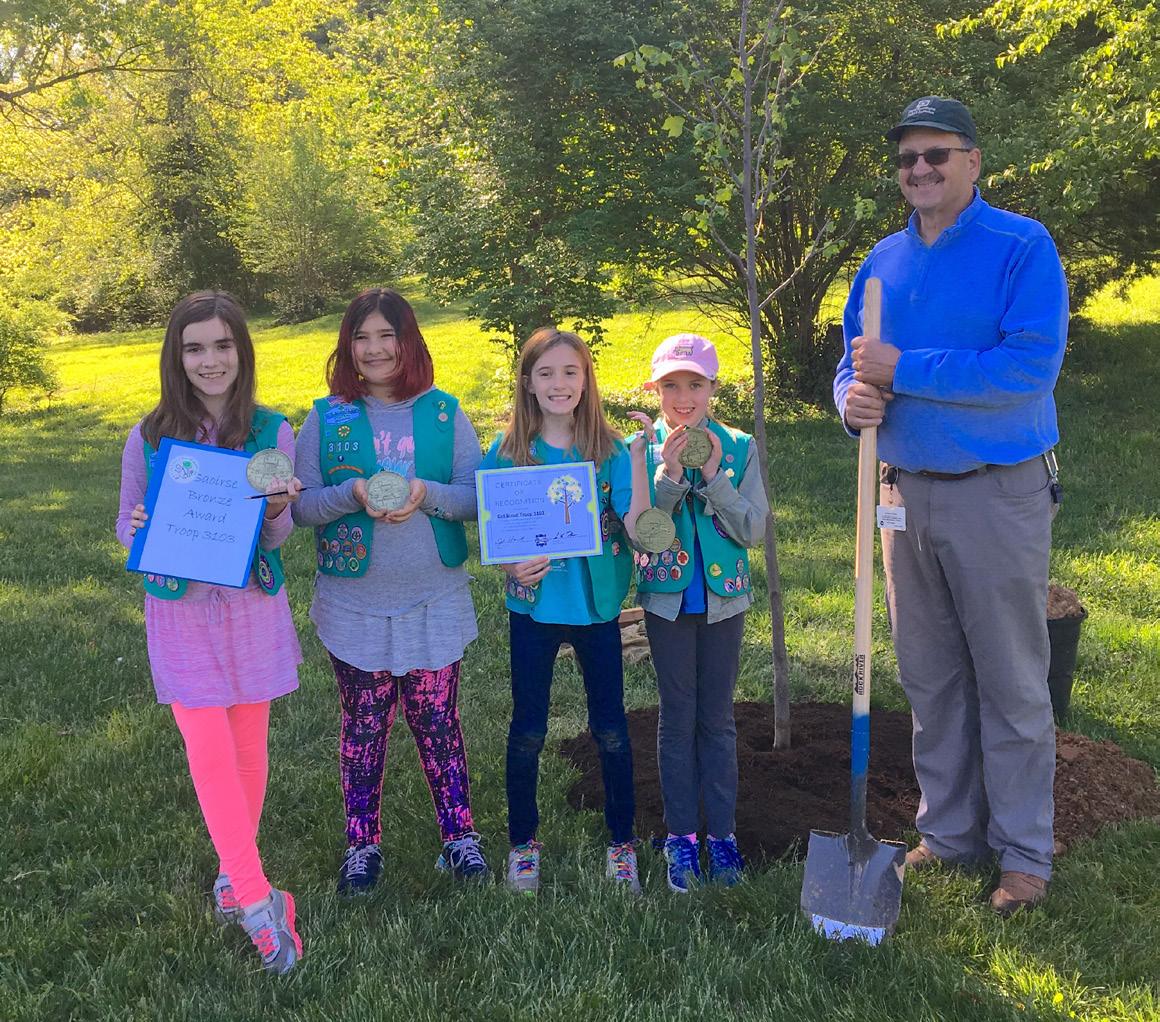
The urban forest for the most part is a man-made forest and subject to utilizing the best scientific practices and standards methods for tree planting and tree care. With guidance from the Bloomington Tree Commission, this Tree Care Manual was developed to educate the public about the arboricultural standards and protocols used by the City of Bloomington to manage this natural resource.
Bloomington’s urban forest does not end with public lands but extends to private property. An old Chinese proverb states “The best time to plant a tree was 20 years ago. The Second-best time is now.” Enjoy the urban forest and take steps to ensure it is there for future generations. Get involved with local tree planting events and consider donating to the Bloomington Tree Fund.
Thank you, Lee Huss
Special thanks to Ace Chestnut, Graphic Designer for Parks and Recreation.
Special thanks to the members of the Bloomington Tree Commission:
George Hegeman
Mia Williams
David Parkhurst
Mary Welz
Stephanie Freeman-Day
Jeff Palmer
Neil Tong
Bloomington Tree Care Manual, Fifth Edition 2024 3
Tree Care Manual
This Tree Care Manual specifies the correct standards of practice for tree planting and the care of trees in the city of Bloomington, Indiana. This manual, which serves as an arboricultural specifications manual, was prepared by the Urban Forester in collaboration with the Bloomington Tree Commission.

Implementation of Tree Care Standards

401 N. Morton St.
Suite 250
Bloomington, IN 47404
bloomington.in.gov/treecare
Mayor Kerry Thomson
Parks and Recreation
Department Director
Tim Street
Urban Forester
Haskell Smith smithh@bloomington.in.gov
A municipal tree ordinance to establish a Tree Commission and to regulate the care of public trees has been in effect since 1992 in the city of Bloomington and was most recently updated in 2023. The ordinance stipulates that all work on trees that lie in the public right of way shall comply with the standards set forth in this manual. While not mandatory, it is recommended that work on trees on private property follow these standards to assure a safe and healthy environment for the citizens of Bloomington.
Adopted Policies Regarding Tree Care
The designation of “Tree City USA” from the National Arbor Day Foundation is one in which the government and citizens take pride and wish to see expressed in the actions and attitudes taken toward trees in the right of way. A goal toward expanding tree cover in our urban environment serves to improve the city’s economic vitality, improve air quality, reduce stormwater runoff, buffer noise, moderate temperatures, increase biodiversity for wildlife habitat, and beautify the city. The responsibility for improving Bloomington’s urban forest is a joint venture between the government and citizens.
The Bloomington Tree Commission has adopted these policies, with a goal of improving the city:
• Encourage the use of proper preventive tree maintenance techniques to ensure long-lived trees, thereby reducing the need for tree removals.
• Expand the tree crown coverage in the city by maintaining existing trees and by planting new urban-tolerant trees, especially native species of shade trees.
• Increase public awareness of and involvement in urban forestry through educational efforts to promote landscaping and tree care on private properties.
• Encourage site designs to provide for the accommodation of trees with other infrastructure, such as utilities, parking lots, buildings, signs, streets, and sidewalks.
4 Bloomington Tree Care Manual, Fifth Edition 2024
Current Tree Commission.
Left to right: Neil Tong, David Parkhurst, George Hegeman, Jeff Palmer, Mia Williams, Haskell Smith, Mary Welz Not pictured: Stephanie Freeman-Day
What is Urban Forestry?
Urban Forestry is defined as the care and management of single trees and tree populations in urban settings for the purpose of improving the urban environment. Urban Forestry within Bloomington Indiana is a division of the Parks and Recreation Department in the city led by the Urban Forester. The Urban Forester oversees all public trees in Bloomington.
What is a public tree?
A public tree is any tree located within city owned property, this includes but is not limited to: right-of-ways, parks, streets, and unimproved alleyways. There are a few resources to help determine if a tree is city owned or not. One of those resources is Treekeeper: the city’s inventory of over twenty thousand public trees. https://bloomingtonin.treekeepersoftware.com/
Obtaining a Tree Work Permit
The City of Bloomington employs crews to maintain our trees, but allows residents to plant, remove, and prune trees via the Tree Work Permit.
A Tree Work Permit is required for any persons:
1. Planting a tree in the public right of way, such as along the street;
2. Removing any tree on a public right of way or public place;
3. Pruning, within the public right of way, any tree where branches more than two inches in diameter will be removed or more than twenty percent of the live canopy;
4. Excavating any ditches, tunnels, or trenches; or laying any drive; installing underground utilities; or storing any soil, stone, cement, or other substance within the Critical Root Zone of any public tree;
5. Treating with pesticides any tree(s) or flora on a public right of way or public place
Tree Work Permit applications are available in this manual on pages 33-34 and from the Bloomington Parks and Recreation office located at 401 N. Morton St. Suite 250 inside City Hall, at the Rosehill Cemetery office, or online at bloomington.in.gov/about/trees. Permit applications must be approved before work begins.
This manual includes a list of prohibited trees (page 25) that are undesirable for planting in the city. These tree species usually have disease, pest, or litter problems that make them unsuitable in urban areas. Some species of trees are invasive in the natural environment due to prolific seeding or root sprouting and as a result should not be planted. The planting of monocultures of trees (lots of the same kind of tree) is highly discouraged because of potential insect and disease problems. The Bloomington Tree Commission highly encourages the use of native tree species from these lists (pages 20-24) when selecting trees to plant.
Contact your Urban Forester Haskell Smith smithh@bloomington.in.gov 812-349-3716
Office: 812-349-3700
Report maintenance and repair needs to the Bloomington Parks and Recreation Department at 812-349-3700, online at bloomington.in.gov/ureport, or by using the QR code below.
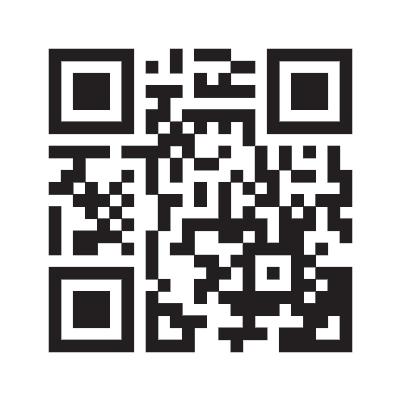
Volunteer Opportunities
To register for volunteer opportunities, visit bloomington.in.gov/parksvol. For additional information regarding volunteer opportunities, email Emily Buuck, at parksvol@bloomington.in.gov. All volunteer opportunities include on-site orientation/ training, unless noted otherwise.
Urban Forestry Programming
See page 27.
Bloomington Tree Care Manual, Fifth Edition 2024 5
Recommended Standards of Tree Care Practice
Safety Statement and Why You Should Choose an Arborist
Tree care and tree work can be strenuous, difficult and dangerous work. Before choosing to do any tree related project you should take some time to think about if you’re the best person suited for the job. Planting a small tree is much different than pruning a 50 year old Pin Oak, or removing a 30-foot tall tree. There are many variables in pruning and removal, and you should consider leaving the heavy lifting to the professionals. There are several ISA Certified Arborists in the Bloomington area who would be happy to help you along in your tree endeavors. See the “Resources” section of this manual on page 35 to find a local arborist.
Tips for Choosing and Planting Trees
Whether you choose to plant a tree in your private yard or along the street on city property, there are important things to consider. The City of Bloomington strives to have many beautiful trees gracing its streets, but trees need to coexist in a safe manner with public infrastructure like utility lines, streets, sidewalks, buildings, and signs. Planting the right tree in the right place is key to having a successful urban forest.
Before planting any tree, look around to see how much room a tree would have to grow to mature size. Look at the space between the sidewalk and street, and above for power lines, phone lines, or street lights that should not be blocked. Be sure to pick the right size tree both for the location you are planting and for the size of buildings near the tree. Consider tree color both in spring and fall, the scale of the planting, and the final shape of a tree in designing your planting area.
Trees should only be planted when average daily high temperatures are below 80 degrees Fahrenheit, and when the ground is not frozen. Generally speaking this timing happens around mid to late September through mid to late May. Planting when the trees are dormant will greatly increase the chances the trees survive the stress of planting. Spring plantings will benefit from our spring moisture, but will often need water throughout the summer to supplement our normal rainfall. Late fall planting allows roots to be established while trees benefit from winter moisture. Freshness and pre-planting care of tree stock are important for survival, as is weekly post-planting watering for a full growing season. Buy only quality trees that are healthy, well pruned, and have a strong central trunk. Bargain trees that have been left in hot sun or cold wind to dry out are not bargains when they die.
Always CALL 811 to contact the free public service utility locate company BEFORE YOU DIG. Underground utilities like phone, gas, electric, and cable TV will be painted or flagged in the vicinity of your tree planting hole. This locating service will also mark underground water and sewer lines in the public right of way area, but not in your yard. If planting a tree next to the street on public property, you must first obtain a Tree Work Permit from the Bloomington Parks and Recreation Department. This assures that the city urban forester can approve the siting of the tree and make sure that an appropriate tree species is selected. This will also assure that the tree is logged into the public tree inventory database. See “Obtaining a Tree Work Permit” on page 5.
6 Bloomington Tree Care Manual, Fifth Edition 2024
Selecting the Right Tree: Size IS important!
This manual contains an approved tree species list (pages 20-25), a list of tree types that are suitable for planting in Bloomington’s climate. Trees are grouped into three size classes—small, medium, and large— based on their mature size. Tree species that appear in this list are also adapted to urban stresses such as road salt, limited grow spaces, and poor soils.
A size class should be chosen based on the growing space of the planting area. To determine what size planting space you have, refer to the “Distance from Infrastructure” section in each list. You should also consider soil volume and rooting space. Soil volume is calculated by multiplying length x width x depth. Effective root depth is rarely over 36 inches. Small trees need at least 350 cubic feet of soil, Medium trees 600 cubic feet, and Large trees should have at least 900 to 1000 cubic feet of soil volume. If you have a small growing space, choose a tree from the small tree type list; a medium space, a medium tree type; and a large space, a large tree type.
Know what’s below. Call before you dig.

To submit a locate request, 24 hours a day, seven days a week, call 811 or 800-382-5544.

Tree Placement Within Public Right of Way
Tree placement within public right of way is governed by Title 20 of the Bloomington Municipal Code, otherwise known as the Unified Development Ordinance (“UDO”).
• Landscape materials shall be located to avoid interference with visibility per Section 20.04.050(c)(4) (Vision Clearance Triangle).
• Trees suitable for planting along public streets and highways, parking lots, and in locations where low maintenance and hardy constitution are required are established in Table 04-14: Permitted Street Trees (pages 21-22).
• Large trees shall be planted at least 10 feet from public sanitary sewer, water service lines, and natural gas lines. Medium and small trees shall be planted at least 5 feet from public sanitary sewer, water service lines, and natural gas lines, except that medium and small trees planted less than 5 feet from public sanitary sewer, water service lines, and natural gas lines may be approved by the Planning and Transportation Director.
• The spacing between adjacent street trees shall be no less than 10 feet from the center of one tree to the next. Street trees shall be planted no more than 30 feet apart, from the center of one tree to the next, except that street trees with separation exceeding 30 feet may be approved by the Planning and Transportation Department because of site constraints, such as utility or driveway location.
Bloomington Tree Care Manual, Fifth Edition 2024 7
Plant Material Handling, Inspection and Storage:
1. Only desirable, long-lived trees of good appearance, beauty, adaptability, and generally free from injurious insects and diseases shall be planted on public sites. Any trees planted shall be adaptable to USDA Zone 6A climate conditions.
2. Trees shall be tagged, indicating species and size. Trees shall be free of wounds, insects, and cankers. Root systems should be full and root balls should be moist, but not moldy. Trees in containers should not have encircling roots. Root balls should be protected from freezing and drying out.
3. Plants should be protected from wind during transport and be kept cool and moist at all times. Care should be taken to not drop or otherwise loosen the root ball. Trees should not be picked up by the trunk. Instead, the soil ball should be supported when moving the plant.
4. Bare-rooted plants must be planted when dormant (buds are closed and not leafed out). Roots should always be kept cool and moist, and trees planted as soon as possible.
5. If stored, the trees should be covered with moist soil, straw, or wood chips. Bare-rooted trees should be soaked in water immediately prior to planting.
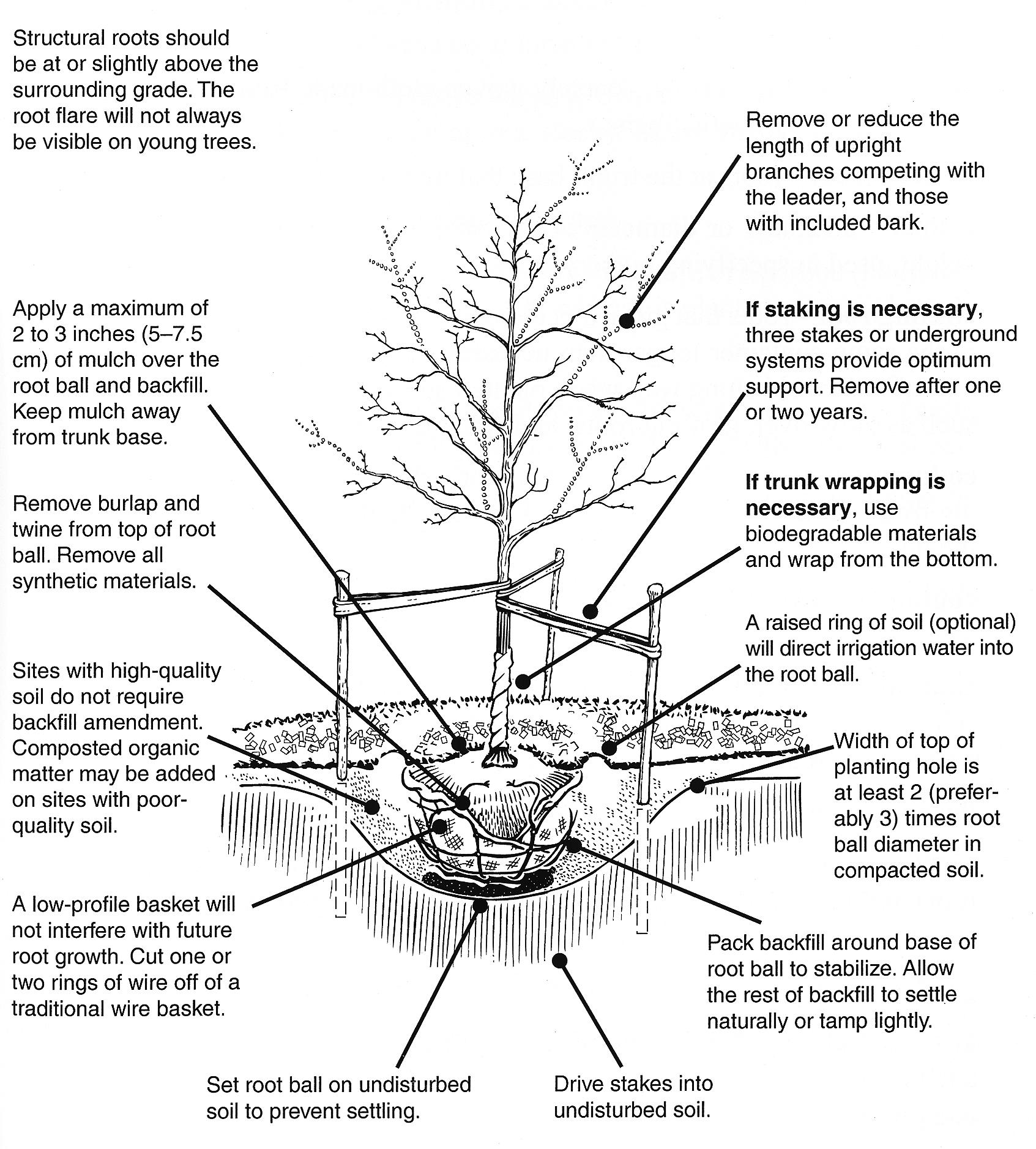
8 Bloomington Tree Care Manual, Fifth Edition 2024
Correct Tree Planting
Planting Procedures
Bare-Rooted Trees
1. Plant trees immediately upon receipt. Keep roots cool and moist at all times.
2. Soak roots in water before planting. When planting trees larger than seedlings, tree roots should be soaked in a wetting gel solution.
3. Cleanly trim any long root hairs or broken roots.
4. Hold the tree in a hole at the soil line, making sure roots are straight and not bent in a “J” shape or circling in the hole. Carefully pack soil firmly around the roots, and water. Plant tree at the previous planting depth for hardwood seedlings, slightly deeper for evergreen seedlings.
Containerized Trees
5. Hole should be dug 2-3 times the spread of the root system and no deeper than the soil depth in the container. Sod should be removed from the site. Handle your tree by the container; never carry or move a tree by the trunk or branches.
6. Trees should be removed from the container without pulling on the trunk or branches.
7. Once the container is removed, any circling or girdling roots should be removed at this time with a clean, sharp pair of hand pruners. Keep in mind roots continue to grow in the direction they are already traveling in, a little pruning now can prolong the life of a tree tremendously.
8. If the tree is extremely root bound: with a sharp, clean hand saw you should square off the root ball removing no more than 15% of the root ball. If tree is not root bound skip this step
9. The root flare should be located and planted even within two inches of the existing surrounding soil grade. Follow steps 7-10 under Balled and Burlapped Trees below.
Balled and Burlapped Trees
10. Hole should be dug with the width three 2-3 times the spread of the root ball and no deeper than the root ball height. Sod should be removed from the site.
11. Carefully remove any tags, twine, tie, or any synthetic material from the top of the tree and discard.
12. Carefully remove the twine, or tie on top of the root ball and discard.
13. Ball and Burlapped trees often have too much soil on top of the root flare, carefully follow the trunk of the stem to where it “flares” into the root system. This is the root flare. The root flare should be within two inches of the surrounding soil grade. Remove any circling or girdling roots at this time.
14. Set trees on native soil that is thoroughly compacted. Trees should be set gently into the hole without stress on the trunk or loosening the root ball.
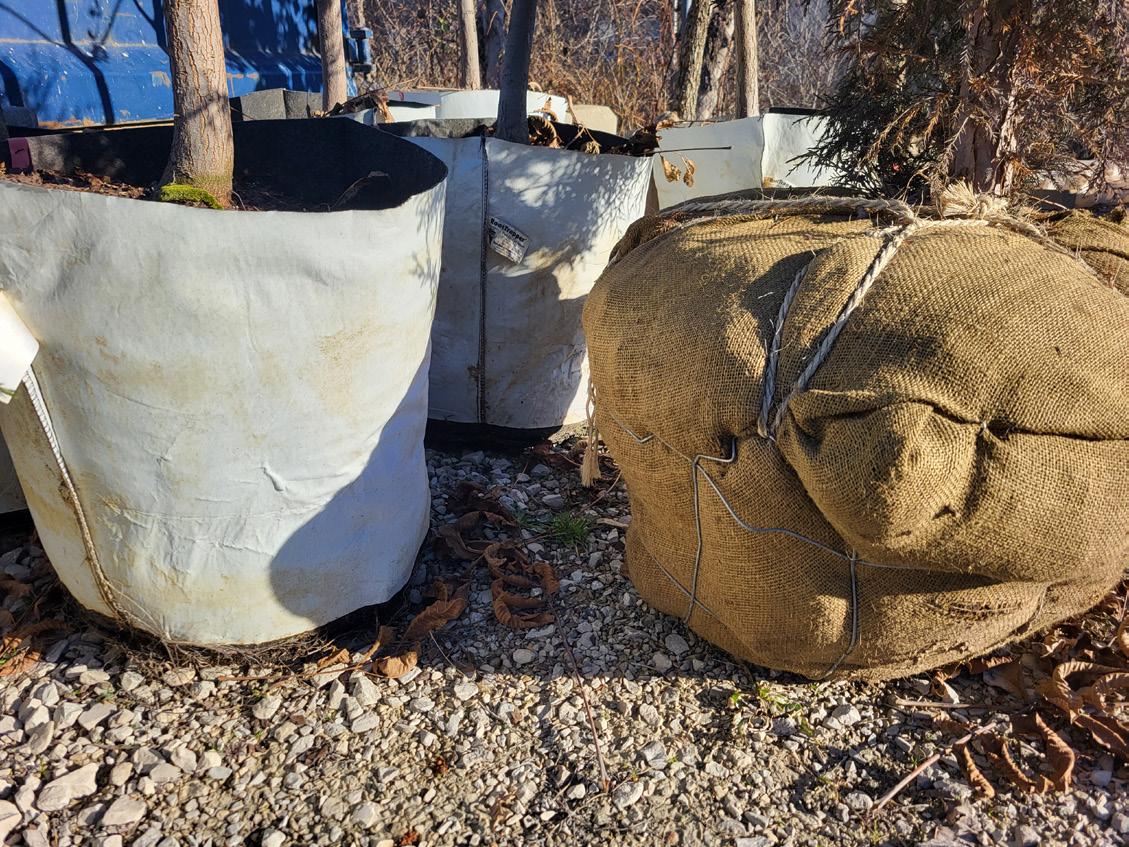
15. Once the tree is set, remove the exposed wire basket and burlap, or fold under surrounding grade.
16. Straighten the tree and backfill 1/3 of the hole with existing native soil, and lightly tamp. Avoid using excessive organic matter additives to the fill. Complete backfill, and tamp again. Check tree straightness again.
17. Apply water to settle the soil.
18. Chop up any dirt clods, add soil if needed.
19. Place a three-inch layer of mulch around the tree in a minimum two-foot radius. Do not pile mulch against the trunk. Instead, keep mulch at least three inches from the trunk.
20. Prune only broken branches. Trees do not normally need to be staked. Staking is recommended for trees with loose root balls, trees exposed to equipment damage, or trees exposed to high wind or high river conditions. Take care to not damage the root ball when staking and remove staking material one year after installation.
Bloomington Tree Care Manual, Fifth Edition 2024 9
Care for New Trees
Watering
Watering a tree is often the most important part of caring for a new tree. New trees should be watered for up to three years after planting. The root zone should be thoroughly watered every five to 10 days from April through October as needed as a supplement to natural rainfall. Plants should receive a total of two inches of water every two weeks, or about 10 gallons per two-inch caliper tree. Watering is critical when summer temperatures exceed 80° F for extended days. Deep Infrequent watering is preferred over shallow scheduled watering.
Fertilizing
Fertilizing is not usually necessary at the time of planting. Once the tree is established you can consult with an arborist to determine if your tree needs fertilization.
Pruning
Newly planted trees should be pruned only as needed to remove dead, damaged, or poorly located limbs. After trees are established, usually a minimum of three years, structure pruning is recommended to promote a strong central tree leader and to remove lower branches as needed for clearance.
Wrapping
Only thin-barked trees such as young maples, linden, beech, and tulip poplars, which are subject to sunscald, should be protected November through April with specialty paper tree wrap material. Never use tape or plastic material. All wrapping should be removed during the growing season. Open bark wounds should not be wrapped but, instead, the bark should be trimmed cleanly and left open to air circulation. If the wound is fresh and the bark still partially attached, the bark can be pressed in place and gently wrapped to attempt to graft back in place.
Mulching
Maintain a ring of mulch around the tree, generally to the drip line, or at least 24 inches. Keep mulch from directly piling up against the trunk. Recommended mulch is shredded bark or aged wood chips.
Newspaper kills grass
If there is grass in the area that needs to be mulched, put a five-page layer of newspaper over the grass, and then add mulch on top. This will help keep the grass from growing up through the mulch.
Mulch becomes soil
There should never be more than four inches of mulch over the roots. Too much mulch or soil can prevent oxygen from reaching the roots. After mulching for several years it may be necessary to remove some of the broken down mulch before applying a fresh layer.
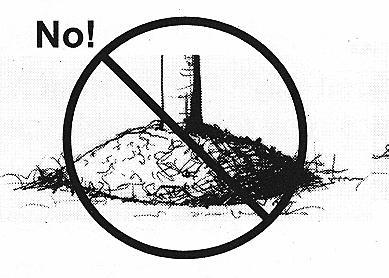
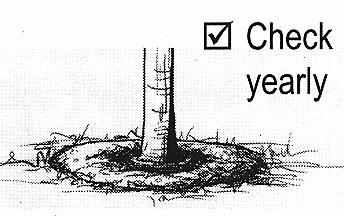
10 Bloomington Tree Care Manual, Fifth Edition 2024
Trunk Protection
The second most important part of caring for your tree is protecting the trunk. A 48 in. rigid plastic mesh that fits loosely around the trunk will help protect from deer rubbing. It will also give some protection from weed eaters and rabbits. If you live near a water source, Hex-Mesh will prevent most beaver damage.
Staking
Only those trees in windy, open areas, along floodplains, or with loose root balls should be staked to prevent movement of the base of the tree at the roots. Freedom of movement in a tree trunk helps a tree develop a stronger trunk. If staking, avoid cutting roots while driving the stake or damaging bark with any rope or wire used. All staking materials should be removed one year after installation.
Mulching
Mulch should be applied at time of planting and reapplied when it has deteriorated into soil. Mulch a depth of three inches for a minimum two-foot radius around the tree. Do not pile mulch against the trunk. Instead, keep mulch at least three inches away from the trunk. Recommended mulch is shredded bark or aged wood chips.
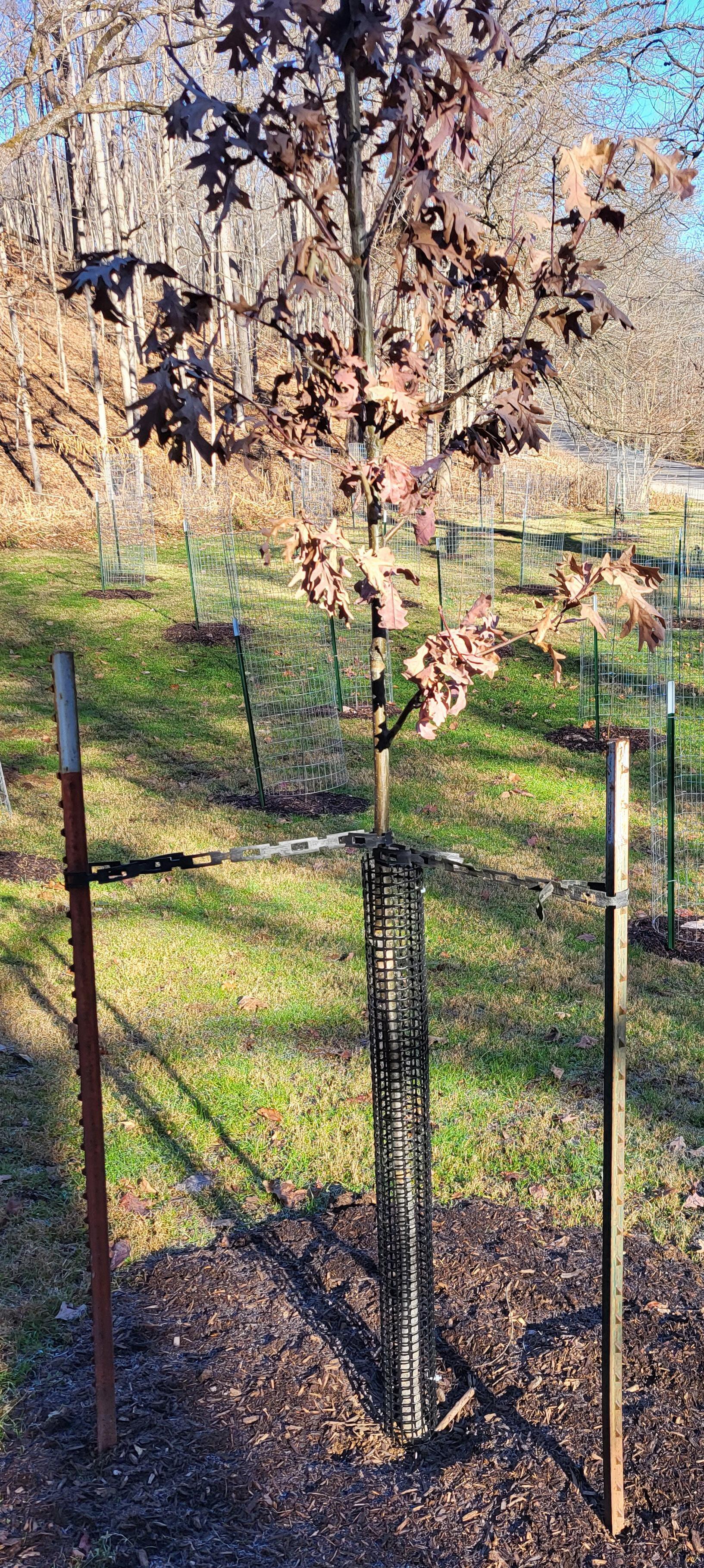
Watering Rule of Thumb
5 gallons of water for every inch of thickness in a tree trunk per week.
Bloomington Tree Care Manual, Fifth Edition 2024 11
Pruning
Choosing an Arborist
An arborist is a specialist in the care of individual trees. Arborists are knowledgeable about the needs of trees and are trained and equipped to provide proper care. Hiring an arborist is a decision that should not be taken lightly. Proper tree care is an investment that can lead to substantial returns. Well-cared-for trees are attractive and can add considerable value to your property. Poorly maintained trees can be a significant liability. Pruning or removing trees, especially large trees, can be dangerous work. Tree work should be done only by those trained and equipped to work safely in trees. See the “Resources” section on page 35 for help finding an Arborist.
Why are you pruning?
A question you should know the answer to before you start pruning is what is your goal in pruning? Are you pruning for clearance? Are you pruning to remove deadwood, or a broken limb? Are you structurally pruning, so the tree can grow unimpeded by its own branches?
Clean Tools and Timing
You should always sanitize your saws or hand pruners before and after each tree you prune. This is vital to reduce the chance of spreading infection of fungal colonies and bacterial infections from tree to tree.
You should also plan the timing of your pruning. Pruning should only be done when the tree limbs you are pruning are completely dry. Pruning in moist conditions increases the chance of spreading disease and infection from one tree to another. You can remove broken, dead, or diseased branches any time of the year, but optimal timing for any other pruning is considered late fall through early spring. You should avoid pruning Oaks from April to November, due to potential Oak Wilt contamination.
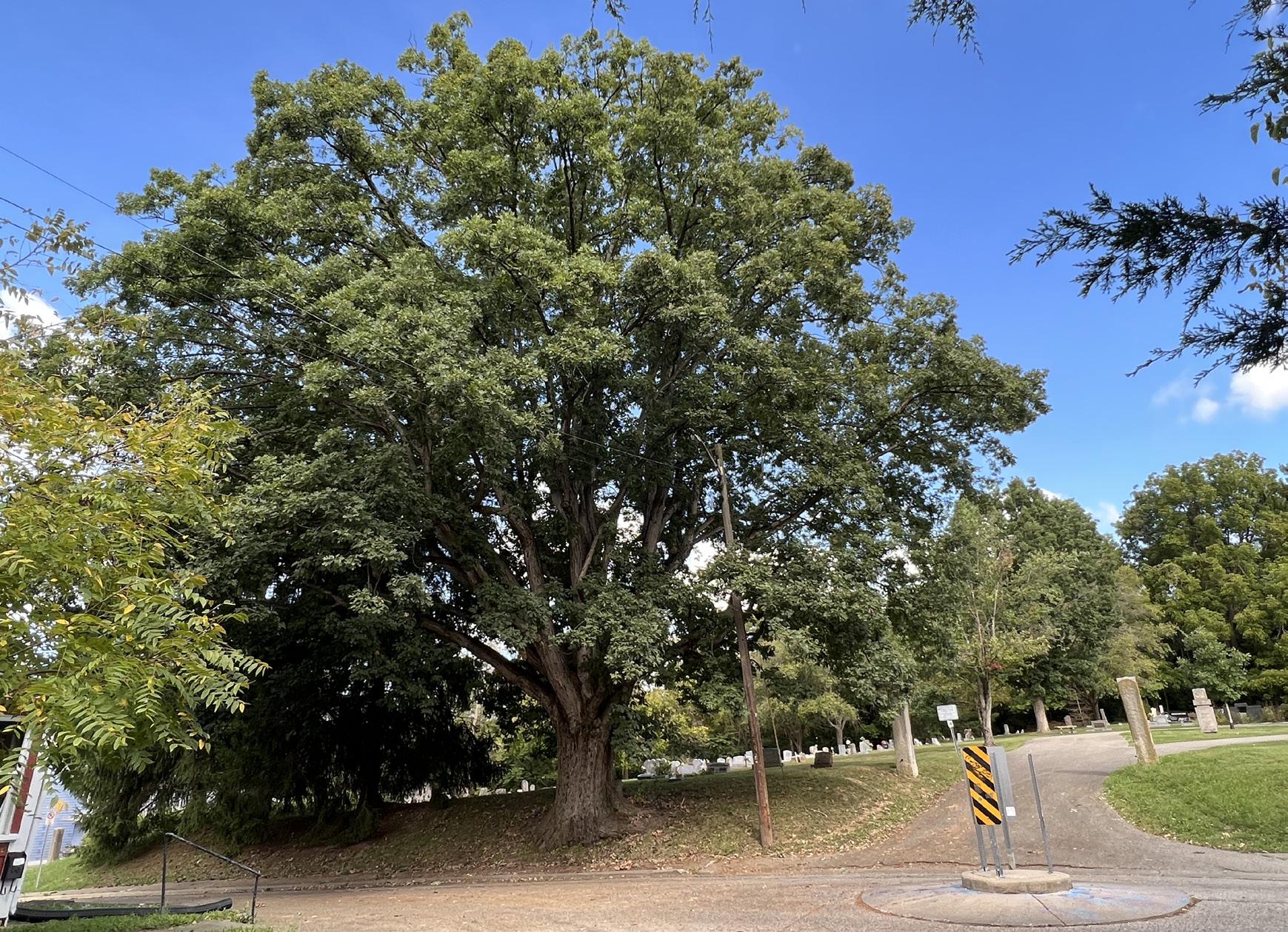
Basic Pruning Methods
Thinning
Thinning is the removal of a side branch back to the larger parent branch or trunk. Thinning cuts reduce the canopy density but generally have little impact on height. Thinning allows better light penetration into the canopy, which encourages growth of interior branches. This improves trunk taper and increases the general vigor of the primary branches and trunk. Thinning cuts reduce the weight on large branches, giving the tree resilience to snow loading. Avoid Lion Tailing (long limb with all the smaller limbs away from trunk).
Heading
Remove the growing tip of a branch. This releases the side buds to grow resulting in a more dense growth at the point of pruning.
Reduction
Reduction is the removal of a larger branch or trunk back to a smaller-diameter side branch. Reduction cuts are commonly used in training young trees. They are also the only type of cut that will significantly lower a tree’s height.
12 Bloomington Tree Care Manual, Fifth Edition 2024
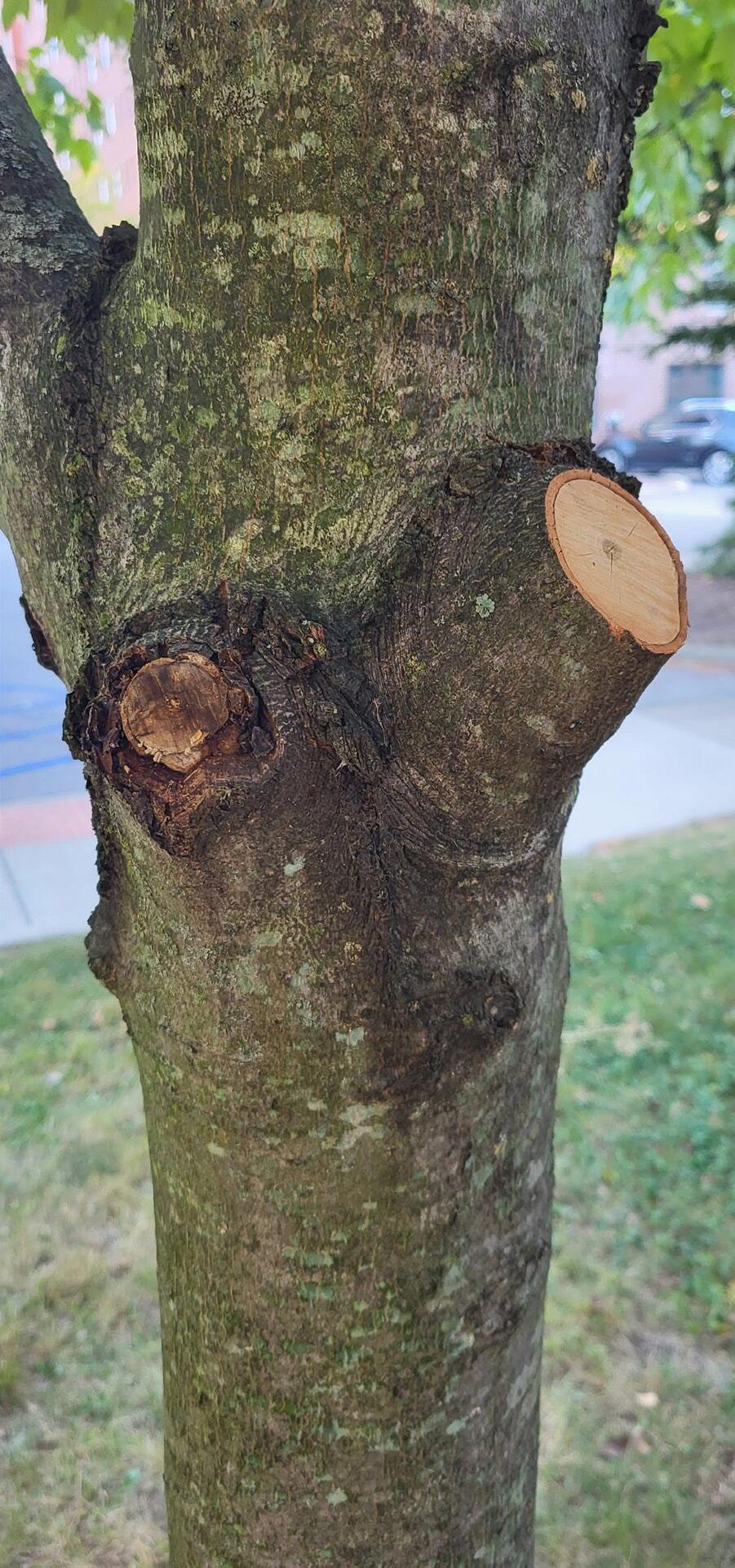
Regulations Governing Pruning of City-Owned Street Trees
The following regulations apply to tree pruning activities on public street trees, whether done by the individual or his/her contracted agent. Refer to the Tree Ordinance on pages 28-32 for more information.
1. Anyone pruning a public street tree by removing branches more than two inches diameter in size is required to obtain a Tree Work Permit (pages 3334) from the Urban Forester.
2. To facilitate the flow of traffic and pedestrians, trees overhanging the street shall be pruned for a clearance of 15 feet and trees and shrubs overhanging the sidewalk shall be pruned for a clearance of eight feet.
3. No tree topping is allowed.
4. To reduce the crown of a tree, crown reduction pruning should be used, which is accomplished by pruning back the tree leaders and branch terminals to lateral branches that are large enough to assume the terminal roles (at least 2/3 the diameter of the cut stem).
5. In simpler terms, always cut back to the “Y” of a limb.
6. Any persons or firm engaging in the business of pruning, treating, or removing trees shall be bonded and insured as currently required by the city.
7. Proper pruning techniques and practices shall be used, as set forth in the ANSI A300 Pruning Standards.
8. Safe tree pruning practices shall be followed. Acceptable Tree Care Safety Standards can be found on the Web by researching document ANSI Z133.12017 from the American National Standards Institute. This document lists the current national safety standards for arboricultural operations.
Bloomington Tree Care Manual, Fifth Edition 2024 13
The Main Pruning Technique
No matter what pruning practice you are utilizing, or method you are following, the “three cut prune” should be utilized to prevent peeling bark, and to leave a final cut that the tree can most easily heal from.
Three Cut Prune
1. The first cut will be eight to twelve inches away from the trunk of the tree, on the underside of the branch. Cut no more than a quarter of the way through.
2. Second cut will move a few inches further away from the trunk, on the top side of the branch, cut all the way through the limb.
3. Final cut will be made from just outside the bark ridge, to just outside of the branch collar. If it cannot be determined where the branch collar is, make the smallest wound possible.
See illustrations below, and for more information see “Resources” section on page 35.
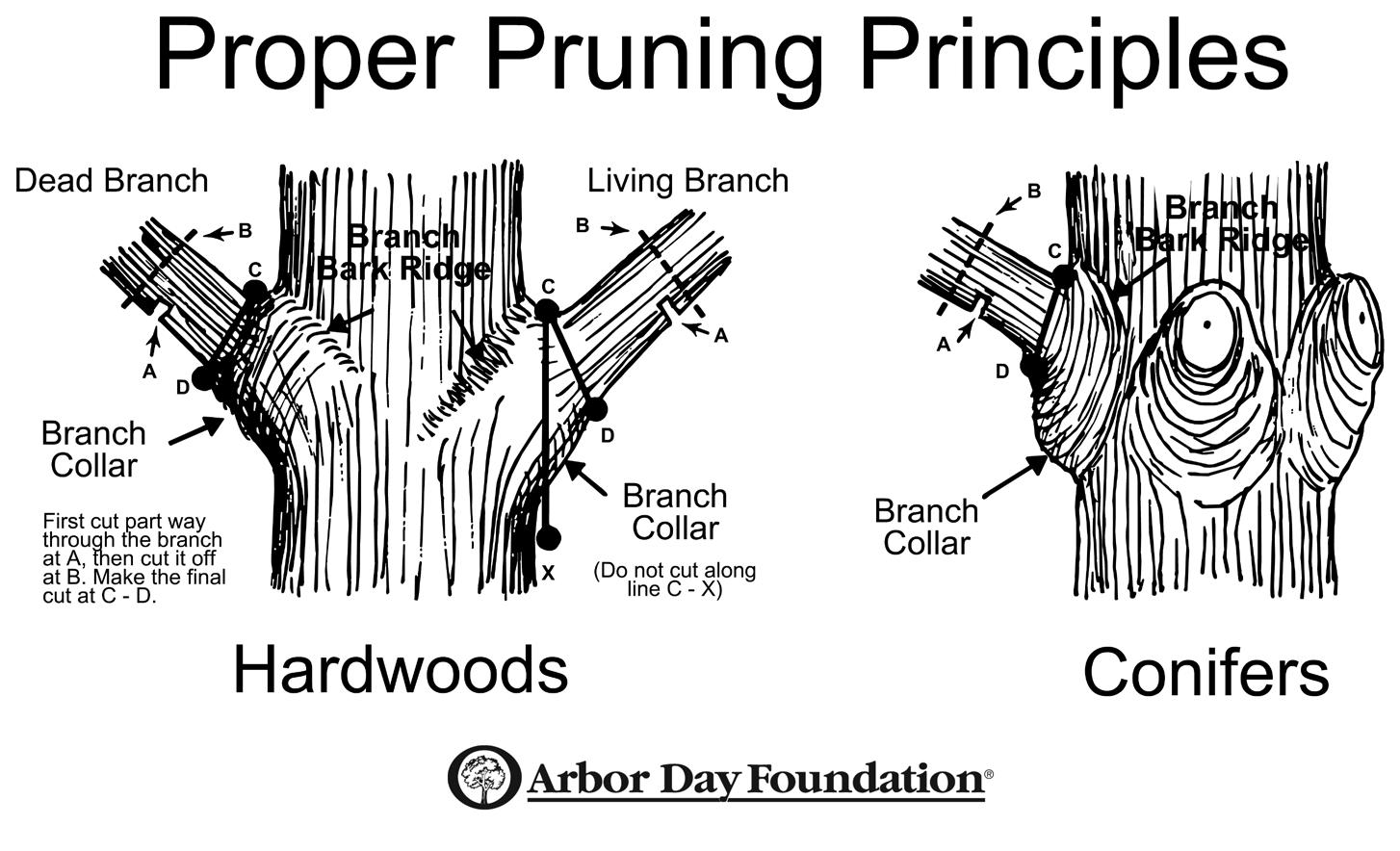
14 Bloomington Tree Care Manual, Fifth Edition 2024
Approved Pruning Practices
Crown Cleaning is the removal of dead, dying, or diseased, crowded, weakly attached, and low-vigor branches from the crown of a tree.
Crown Thinning is the selective removal of branches to increase light penetration and air movement through the crown. Thinning opens the foliage of a tree, reduces weight on heavy limbs, and helps retain the tree’s natural shape.
Crown Raising removes the lower branches from a tree in order to provide clearance for buildings, vehicles, pedestrians, and sight.
Crown Reduction reduces the size of a tree, often for clearance for utility lines. Reducing the height or spread of a tree is best accomplished by pruning back the leaders and branch terminals to lateral branches that are large enough to assume the terminal roles (at least half the diameter of the cut stem).
Retrenchment Pruning is a strategy for mature trees that are declining in health due to decay, dieback, or damage to the crown. Mature trees reach a point in their canopy growth that they cannot grow past or support. The purpose of retrenchment is to grow a new crown below the current one that is at a reduced height.
Tree topping is not an accepted pruning practice.
Tree topping is banned in Bloomington, and is considered an unacceptable practice in arboriculture. Topping is defined as the severe cutting back of major limbs to stubs larger than three inches in diameter within the tree’s crown to such a degree as to remove the normal canopy and disfigure the tree.
To prevent the need for topping, start out by planting the right trees that will fit the available space. Begin pruning early to modify the structure of a tree as needed. Pruning early in the life of a tree can prevent the need for expensive mature tree pruning.
If you are worried about a limb over your house, or the overall height of the tree, contact an ISA Certified Arborist, and ask them to do a Tree Risk Assessment. See the “Resources” section on page 35 for assistance in locating an Arborist.
Eight Good Reasons Not to Top a Tree
Tree Topping
1. Starvation: Topping removes so much of the tree’s leafy crown that it dangerously reduces the tree’s food-making ability.
2. Shock: By removing the protective cover of the tree’s canopy, bark tissue is exposed to the direct rays of the sun. The resultant scalding can cause the tree’s death.
3. Insects and Disease: The exposed ends of topped limbs are highly vulnerable to insect invasion or decay fungi spores.
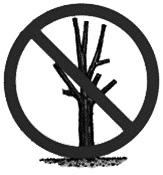
4. Weak Limbs: New branches that grow from a stubbed limb are weakly attached and more liable to break from snow or ice weight.
5. Rapid New Growth: Instead of controlling the height and spread of the tree, topping has the opposite effect. New branches are more numerous and often grow higher than before.
6. Tree Death: Some tree species can’t tolerate major branch loss and still survive. At best, they remain weak and disease-prone.
7. Ugliness: A topped tree is a disfigured tree. Even with new growth it never regains the grace and character of its species.
8. Cost: The true cost of topping is often hidden – lower property values, expense of removal and replacement if the tree dies. Once a tree is topped it becomes a recurring event, you will need to top or remove the tree in the future, and so what initially seemed like a cheaper option, will now be significantly more over the course of just a few years.
Bloomington Tree Care Manual, Fifth Edition 2024 15
Tree protection zone during construction
The following is an excerpt from the Tree Ordinance (pages 28-32) 12.24.075. This is for any publicly owned tree, however these would be good standards to follow on private property as well.
1. The Tree Protection Zone shall be surrounded by a tree protection barrier at least 4 feet tall, highly visible, sturdy, restricts entry, and have warning signs that specifies the financial penalties possible if encroachment occurs.
2. Tree Protection Zones shall be depicted on the Site Plans to avoid conflict with utilities or structures during construction.
3. The Tree Protection Barrier shall be installed by the responsible party and inspected by the City or its designee prior to land-disturbing activities.
4. The following activities are prohibited within the tree protection zone;
A. Construction or land-disturbing activities,
B. Equipment or supply storage,
C. Equipment movement,
D. Stockpiling, of any material
E. Rest or picnicking,
F. Altering soils, including grade changes, surface treatment, compaction, or foot traffic.
Tree Preservation
Protecting Tree Roots
If a tree’s roots are damaged, the tree is damaged and may succumb to an early death. Trees usually decline slowly and begin showing stress with dying tips of branches in the canopy. While roots extend well beyond the drip line or edge of a tree’s canopy, there is a root area that needs special protection—the Critical Root Zone (CRZ). This is defined as a circular region measured outward from the tree’s trunk representing the essential area of the roots that must be maintained or protected for the tree’s survival. CRZ is a one-foot radial distance for every inch of tree diameter at breast height (DBH), with a minimum distance of eight feet. For very special trees, the formula changes to 1½ feet for every inch of DBH.
Material Storage
No dirt or materials, construction or otherwise, should be stored within the tree’s Critical Root Zone. Chemicals, oil or hot charcoals should never be disposed of in the CRZ under a tree. When grading yards, a layer of soil more than four inches deep will damage tree roots, as will the cutting of roots. Eighty percent of a tree’s roots are in the top 24 inches of soil. Roots need to be close to the surface for oxygen needs.
Parking under trees causes soil compaction which hurts roots and stresses trees. During construction activities where vehicles will pass repeatedly under trees and over roots, a thick layer of wood chips, or anything to spread out the weight can be placed temporarily on the path to help prevent soil compaction.
Tree Preservation Through Pruning
There are several ways to prolong the life of a tree. Retrenchment pruning is a good candidate for an older tree in slow decline, root pruning to repair a fence, dead wooding to minimize the risk of a falling branch. There are many options out there to address a wide variety of issues. Tree preservation should always come first, and when none of the conditions can be met to preserve the tree, then removal should be scheduled. Contact a Certified Arborist to get a better picture of what methods might suit the needs of a tree. See “Resources” on page 35 for assistance in locating an Arborist.
16 Bloomington Tree Care Manual, Fifth Edition 2024
Tree Preservation (cont.)
Sidewalk Construction and Repair
Large trees in small grow spaces can cause sidewalk lift and a tripping hazard. Planting the right tree (or no tree) in a small space helps prevent this problem. Where tree and sidewalk conflicts already exist, there is unfortunately no perfect solution. Options range from sidewalk redesign to root pruning to tree removal.
Sidewalk lift is caused by both tree root expansion and by poor sidewalk condition. Sidewalks deteriorate with time and from seasonal movement from freezing and thawing. Tree roots can then grow into cracks and voids, raising pavement. By properly installing sidewalks with adequate base materials, the concrete will be less prone to both soil movement and tree root pressure.
Where sidewalk replacement and installation is performed, street trees affected will be evaluated by the city’s urban forester to assess impact of construction on the tree health. Damage to sidewalks is not a sufficient reason to remove a tree if present damage can be adequately corrected and future damage can be averted.
City zoning laws require sidewalks to be installed at a five-foot width. Any smaller width requires a variance through the Board of Zoning Appeals. Where tree root conflicts exist it may be possible to reduce sidewalk width and still be in compliance with federal ADA sidewalk mandates.
With permission from the city, it may be possible to install paving options such as paver bricks, asphalt, or rubber mats, or to ramp the site to avoid cutting tree roots. If tree roots are cut, they must be cut cleanly. It is also important that not too many roots are cut. The “four-by-four-by-four rule” noted in the next section is a good guideline for determining if a tree’s support or health is compromised.
Roots exposed during construction should be kept moist. Wet burlap makes a good protective covering.
Trenching and Tunneling Standards
Any installation of underground public utilities shall employ, whenever physically able, tunneling instead of trenching within the Critical Root Zone area of any public tree. All roots over two inches in diameter shall be cut cleanly. All trenches shall not stay open longer than necessary and shall be properly barricaded.
Four-by-Four-by-Four Rule: if any four tree roots four inches in diameter within four feet of the tree are cut, the tree should be removed because of increased tree wind-throw failure potential.
Treating with Pesticides
Treating trees or flora with pesticides (herbicides or insecticides) shall be done only for the control of specific nondesirable vegetation, diseases, insects, or other plant pests with the proper materials, at the properly labeled rates, and applied at the proper time to obtain the desired control, as specified by the chemical manufacturer. All spraying of pesticides shall conform to federal and state regulations.
Any pesticide (herbicide, fungicide, insecticide etc...) applied on public owned flora shall be administered by a certified professional, who maintains a certification through the Office of the Indiana State Chemist (OISC), and follows all guidelines set in the Integrated Pest Management plan for the City of Bloomington.
A Tree Work Permit (page 33-34) must be secured before treating with any pesticide on any tree or flora in the public right of way or in any public places. This includes the treatment of ash trees on the public street right of way or any public place with an approved insecticide to protect the tree from emerald ash borer infestation.
Bloomington Tree Care Manual, Fifth Edition 2024 17

Preservation of Volunteer Trees
Volunteer trees are ones that come up in both landscaped and natural areas without being intentionally planted, and unfortunately not all volunteer trees are good trees. Below are tips for determining if fostering the growth of the volunteer tree is a good idea or a bad one:
• What is it? Is it native? The first step should be identification. Invasive species such as Tree of Heaven, Callery Pear and White Mulberry will often invade heavily and should be removed as soon as possible before the saplings have time to establish.
• Remember “Right Tree, Right Place”. First, determine the tree species and your desire to keep it in its place. Then it’s time to determine if the tree can grow to its full potential unhindered. A sapling growing next to your foundation is never a good place for any tree. Keep in mind sight lines, overhead and underground utilities. It is also good to have a rough idea of how large the tree will eventually become.
• Defects. With most trees, a single stem is desired, unless the species is supposed to be a clump. Does it have codominant stems? Have local wildlife repeatedly chewed the buds off the sapling? Is the trunk straight? Some defects can be pruned out, while others may be detrimental to the longevity of the tree.
• Move it? If a sapling is not currently growing in a good spot, but is still a healthy native tree you can transplant it to a suitable location. Time the transplant to the dormant season. Take care to dig and move as much of the root system as possible. Plant to the same depth it previously was growing at. Follow “Care for New Trees” on pages 10-11.
• Lose it? If none of the above conditions are met or can be met, it’s time to consider removal. Most saplings can be pulled out by their root system when they are young. However, once a certain size is reached, the tree will need to be pruned to ground level. Continue pruning any new growth until the roots exhaust their energy.
18 Bloomington Tree Care Manual, Fifth Edition 2024
Tree Removal Standards
Tree removal should be considered the last option, and is reserved for high-risk trees or tree parts that have a high potential for failing, and a high potential to strike a foreseeable target resulting in significant consequences. The determination of whether a city-owned tree is a risk or not can only be made by qualified staff or their designated agent.
All removals of public owned trees shall require a Tree Work Permit (pages 33-34) from the Urban Forester. Persons performing tree removals must meet all insurance and bonding requirements set forth in the Tree Ordinance (pages 28-32). Appropriate street and sidewalk barriers shall be placed where removals may endanger the public. A Right of way permit may be needed to close sidewalks or roadways. Right of way permits can be found in the “Resources” section on page 35.
Care shall be taken in the removal process to not damage any surrounding infrastructure or flora on public or private property. The stumps of all trees shall be removed to at least 24 inches below ground level to prep for a replacement tree. The cavity shall be filled with soil and leveled. The Urban Forester can approve shallower depths based on underground utilities or other conflicts.
Tree Removal

Invasive Trees
There are several invasive species actively invading our landscape. Callery pear, Tree of Heaven and white mulberry are the three biggest challenges. The City of Bloomington currently has a multi-year plan to remove all planted Callery pear trees from public streets and parks. Removal of these trees is time consuming and difficult, and more often than not involves some form of chemical application to completely kill the root system and to prevent new shoots from forming. While small saplings can be pulled up by the roots, larger invasive removals should be discussed with a professional. More information about invasive identification, and control can be found at https://www.mc-iris.org/invasive-species.html
Bloomington Tree Care Manual, Fifth Edition 2024 19
Bloomington Approved Tree Species Lists
Below are lists of trees that are permitted along streets and in the interior of public owned properties. This is followed by a list of prohibited species, and finally a list of species with poor overall characteristics. This comes from our Bloomington Municipal Code, and could potentially change in the future, as of the time of publishing this manual this is how it reads. For the most recent information see the “Resources” section on page 35 to find a link to BMC.
The below tables are also used when developing or redeveloping a property.
It is worth noting that just because a tree is listed here and fits into the “Right Tree, Right Place” mantra does not mean it is the ideal tree. Maples for instance have been planted in excess along our streets, and represent about 25% of Bloomington’s urban forest. In the event of a maple focused invasive pest or disease outbreak, the chances of substantial canopy loss is much higher because of the species composition of our urban forest. Consider the other trees around when making a decision to plant a tree, and aim for diversity.
Most trees are going to desire a moist, well drained loamy soil that is slightly acidic, and has an average to rich nutrient density. However most species are adaptable to most soils, but it will affect their growth rate.
Per Bloomington Municipal Code Chapter 20.04.080 Table 4.14

20 Bloomington Tree Care Manual, Fifth Edition 2024
Permitted Large Street Trees
Common Name
Scientific Name
Sugar Hackberry Celtis laevigata
Hackberry Celtis occidentalis
Thornless Honeylocust Gleditsia triacanthos var. inermis
Kentucky Coffee Tree Gymnocladus dioicus
Comments from the Urban Forester
Similar to Hackberry, but prefers moist soils
Bird and bee friendly. Somewhat drought and flood tolerant, grows well in almost any soil. Pollution tolerant.
Aggressive roots, surface roots often. Preferred Cultivars: Skyline, Imperial, Northern Acclaim, Shademaster
Seedless Cultivar: Espresso Takes time to fill out, can look ‘lanky’ for several years.
Tulip Tree Liriodendron tulipifera Fast growing shade tree. Occasional Honeydew issues.
Blackgum Nyssa sylvatica
Sycamore Platanus occidentalis
London Plane Tree Platanus x acerifolia
White Oak Quercus alba
Swamp White Oak Quercus bicolor
Scarlet Oak Quercus coccinea
Shingle Oak Quercus imbricaria
Overcup Oak Quercus lyrata
Bur oak Quercus macrocarpa
Chestnut Oak Quercus montana
Chinquapin Oak Quercus muehlenbergii
Willow Oak Quercus phellos
Red Oak Quercus rubra
Shumard Oak Quercus shurmardii
Post Oak Quercus stellata
Black Oak Quercus velutina
Bald Cypress Taxodium distichum
Basswood, American Linden Tilia americana
American Elm Ulmus americana
Needs extra care a few years after transplanting, once established it becomes low maintenance. Several cultivars that only grow to about 40 ft.
Adaptable to almost any soil, occasional Anthracnose issues, otherwise pest resistant.
Same as sycamore with Anthracnose resistance
All oaks are a keystone species for our native wildlife, and are fantastic shade trees.
Prefers wet sites
Adaptable to most sites except for Alkaline soils. Prefers sandy soils.
Adaptable to most soils, prefers moist acidic soil.
Prefers well drained sites, but can tolerate some flooding and is adaptable to most soils
Largest Acorn, some drought tolerance, adaptable to most soils
Adaptable to most soils, prefers well drained sites.
Prefers alkaline soils, but tolerant of most types. Appears to like limestone (calcareous) soils
Pollution, drought tolerant, prefers acidic soil.
Some drought tolerance, Adaptable to most soils
Some drought tolerance, Adaptable to most soils
Urban tolerant tree, adaptable to most soils, prefers dry sites.
Drought tolerant, prefers slightly acidic soils, adaptable to most soil types.
Wet sites, potentially grows “knees”
Pollinator friendly. Occasional Honeydew issues. Japanese beetles will occasionally skeletonize leaves on young trees
Dutch Elm Disease (DED) resistant cultivars' only. Fast growing shade tree
Bloomington Tree Care Manual, Fifth Edition 2024 21
Permitted Medium Street Trees
Common Name
Scientific Name
Downy Serviceberry Amelanchier arborea
River Birch Betula nigra
American Hornbeam Carpinus caroliniana
Yellowwood Cladrastis kentukea
Hophornbeam Ostrya virginiana
Sourwood Oxydendrum arboretum
Blackjack Oak Quercus marilandica
Columnar Oak Quercus x
Permitted Small Street Trees
Common Name Scientific Name
Apollo Maple Acer saccharum ‘Barrett Cole’
Shadblow Serviceberry Amelanchier canadensis
Allegany Serviceberry Amelanchier laevis
Apple Serviceberry Hybrid Amelanchier x grandiflora
Eastern Redbud Cercis canadensis
Flowering Dogwood Cornus florida
American Smoke Tree Cotinus obovatus
Thornless Cockspur Hawthorn Crataegus crus-galli
Washington Hawthorn Crataegus phaenopyrum
Green Hawthorn Crataegus viridis
Comments from the Urban Forester
Edible fruits are attractive to wildlife
Wet sites. will become chlorotic in poor soils.
Full sun to Part Shade, tolerates most soils. Slow growth rate
Flowers best in full sun, tolerates most soils.
Part shade to Full sun. Adaptable to most soils
Needs extra care a few years after transplanting, once established it becomes low maintenance. Full sun to part shade. Pollinator friendly
Urban, drought, salt tolerant. Grows in nearly any soil. Requires pruning to maintain attractive form.
Best cultivars: Beacon Oak, Crimson Spire Oak, Regal Prince Oak, Green Pillar Pin Oak.
Comments from the Urban Forester
One of two powerline friendly sugar maples.
Edible fruits are attractive to wildlife. All serviceberries will tolerate heavy alkaline soils, and part shade, but will flower and fruit best in full sun.
Edible fruits are attractive to wildlife
Edible fruits are attractive to wildlife
Flowers best in full sun, but grows well in part shade. Tolerates heavy clay, and most soils. Relatively short life span.
Can survive in full sun, but prefers part shade.
Full sun to part shade, tolerates most soils, but prefers alkaline soil.
Adaptable to most sites, except for commonly wet sites. Commonly wide spreading low branching habit. Attractive to wildlife and pollinators. Susceptible to cedar quince rust.
Adaptable to most sites. Attractive to wildlife and pollinators Columnar varieties available. Susceptible to cedar quince rust.
Adaptable to most sites. ‘Winter King’ is the most common cultivar. Susceptible to cedar quince rust.
22 Bloomington Tree Care Manual, Fifth Edition 2024
Permitted Interior Trees
All permitted street trees are also permitted as interior trees
BMC 20.04.080 Table 04.15
Permitted Large Interior Trees
Common Name Scientific Name
Black Maple Acer nigrum
Red Maple Acer rubrum
Sugar Maple Acer saccharum
Yellow Buckeye Aesculus flava
Ohio Buckeye Aesculus glabra
Bitternut Hickory Carya cordiformis
Pignut Hickory Carya glabra
Pecan Carya illinoinensis
Shellbark Hickory Carya laciniosa
Shagbark Hickory Carya ovata
Mockernut Hickory Carya tomentosa
Northern Catalpa Catalpa speciosa
American Beech Fagus grandifolia
Black Walnut Juglans nigra
Eastern Red Cedar Juniperus virginiana
Sweetgum Liquidambar styraciflua
Cucumber Tree Magnolia acuminata
White Pine Pinus strobus
Virginia Pine Pinus virginiana
Black Cherry Prunus serotina
Black Willow Salix nigra
Comments from the Urban Forester
Tolerates most sites, prefers moist soils, commonly found in bottomlands. Full sun for best growth, but is shade tolerant.
Prefers moist soils, commonly found in bottomlands. Full sun for best growth, but is shade tolerant. Cultivars commonly have root girdling issues.
Full sun for best growth, but is shade tolerant. Tolerates most sites. Drought intolerant.
Tolerants of most sites and soils. Fruit/seed toxic to some livestock and humans. Non-toxic to wildlife.
Tolerants of most sites and soils.Full sun to shade, can be an understory tree. Fruit/seed toxic to some livestock and humans. Non-toxic to wildlife.
Tolerates most sites ranging from dry to occasional flooding. Wildlife friendly tree.
Smallest hickory nut Tolerates most sites ranging from dry to occasional flooding. Wildlife friendly tree.
Tolerates most sites ranging from dry to occasional flooding. Wildlife friendly tree.
Largest hickory nut Tolerates most sites ranging from dry to occasional flooding. Wildlife friendly tree.
Tolerates most sites ranging from dry to occasional flooding. Wildlife friendly tree.
Tolerates most sites ranging from dry to occasional flooding. Wildlife friendly tree.
Adaptable to most sites, prefers full sun. somewhat messy seed pods. Commonly hollows out post maturity.
Adaptable to most sites, can tolerate shade when young, but prefers full sun. Commonly hollows out post maturity. Wildlife friendly
Adaptable to most sites. Messy fruit/seed. Roots produce chemicals to inhibit other plant growth.
Adaptable to a wide range of sites and soils. Host for Cedar apple rust.
Adaptable to a wide range of sites and soils. Aggressive roots, nuisance fruit. Wildlife and pollinator friendly.
Tallest growing native species in Indiana. Susceptible to a fungal infection called Dothistroma.
Susceptible to diplodia tip blight
Adaptable to a wide range of sites and soils. Keystone species second only to oaks.
Prefers wet sites
Eastern Hemlock Tsuga canadensis Highly intolerant of drought.
Bloomington Tree Care Manual, Fifth Edition 2024 23
Permitted Medium Interior Trees
Common Name
Scientific Name
Comments from the Urban Forester
Southern Catalpa Catalpa bignoniodes See Northern Catalpa
Downey Hawthorn Crataegus mollis
Persimmon Diospyros virginiana
American Holly Ilex opaca
Sassafras Sassafras albidum
American Arborvitae Thuja occidentalis
Permitted Small Interior Trees
Common Name Scientific Name
Red Buckeye Aesculus pavia
Devil’s Walking Stick Aralia spinosa
Pawpaw Asimina triloba
Pagoda Dogwood Cornus alterfolia
Silverbell Halesia carolina
American Plum Prunus americana
Chickasaw Plum Prunus angustifolia
Hop tree Ptelia trifolata
Dwarf Chinquapin oak Quercus prinoides
Winged Sumac Rhus copallinum
Smooth Sumac Rhus glabra
Staghorn Sumac Rhus typhina
Commonly Less thorny than other Hawthorns, but thorns still exist. Pollinator and wildlife friendly, low spreading branch habit. Full sun to part shade.
Full sun to part shade. adaptable to most sites Pollinator and wildlife friendly. Produces edible fruit.
Adaptable to most sites and soils. Evergreen with spiky leaves.
Part shade to full sun, generally forming clonal colonies.
Easy to over or underwater. Deer often browse the lower branches.
Comments from the Urban Forester
Commonly a clump tree, but can be found as a single stem. Full sun to full shade.
Very Pollinator friendly. Largest compound leaf in North America. Briar like thorns along the trunk. Full sun to part shade, may form clonal colonies or thickets.
Produces edible fruit. Commonly produces clonal colonies. Shade to full sun.
Can survive in Full sun but would prefer part shade to dappled sun.
Full sun to partial shade, but prefers a sheltered growing site. Growth similar to Red bud
Produces edible fruit. Full sun to part shade. Tolerates most soils and sites.
Adaptable to most sites, it prefers sandy soils in partial shade. Will not tolerate highly alkaline soils. Produces small edible fruit. May have thorns.
Also called Wafer Ash. Adaptable to a wide range of sites and soils. Prefers part shade, but does well in full sun.
Commonly found on dry rocky sites. Prefers part shade to full sun. Produces acorns at a younger age than most oaks.
Also called ‘Shining Sumac’.Adaptable to most sites. Intolerant of habitually wet soils. Prefers Full sun. All Sumacs are important wildlife food sources.
Prefers full sun, acidic soil. Will tolerate some dryness and alkalinity. Like other Sumacs will form clonal colonies or thickets.
Adaptable to most sites
24 Bloomington Tree Care Manual, Fifth Edition 2024
Prohibited Trees in Bloomington
While some of these trees may exist in Bloomington, it is no longer acceptable to plant any of the following species. This is from BMC 20.04.080 Table 04.18
Prohibited Invasive Trees
Common Name
Scientific Name
Hedge Maple Acer campestre
Amur Maple Acer ginnala
Norway Maple Acer platanoides
Sycamore Maple Acer pseudoplatanus
Tree of Heaven Ailanthus altissima
Mimosa Albizia julibrissin
Black Alder Alnus glutinosa
Kousa Dogwood Cornus kousa
Cherry Dogwood Cornus mas
Russian Olive Elaeagnus angustifolia
Autumn Olive Elaeagnus umbellata
Hardy Rubber Tree Eucommia ulmoide
Any European Buckthorn Frangula alnus, Rhamnus frangula, Rhamnus cathartica
Golden Raintree Koelreuteria paniculata
Chinaberry Tree Melia azedarach
White Mulberry Morus alba
Princess Tree Paulownia tomentosa
Sawtooth Oak Quercus acutissima
Amur Cork Tree Phellodendron amurense
Callery pear and all cultivars Pyrus calleryana
Black Locust Robinia pseudoacacia
Siberian Elm Ulmus pumila
Zelkova Zelkova serrata
Prohibited Interior Trees
Common Name
Scientific Name
Box Elder Acer negundo
Silver Maple Acer saccharium
European White Birch Betula pendula
Ash Fraxinus
Gingko Gingko biloba
Flowering Crabapple Malus
American Elm Ulmus americana
Comments from the Urban Forester
Aggressive or invasive characteristics
Aggressive or invasive characteristics
High ranked invasive plant
Aggressive or invasive characteristics
State regulated, high ranked invasive plant
Medium ranked invasive plant
State regulated, high ranked invasive plant
Aggressive or invasive characteristics
Aggressive or invasive characteristics
State regulated, high ranked invasive plant
State regulated, high ranked invasive plant
Aggressive or invasive characteristics
State regulated, high ranked invasive plant
Aggressive or invasive characteristics
Aggressive or invasive characteristics
State regulated, high ranked invasive plant. Hybridizes with native mulberry.
Medium ranked invasive plant
Aggressive or invasive characteristics
State regulated, high ranked invasive plant
High ranked invasive plant
Aggressive or invasive characteristics
State regulated, high ranked invasive plant
Aggressive or invasive characteristics
Comments from the Urban Forester
Weak wood, poor form
Weak wood, poor form, drops more limbs as it ages
Susceptible to insect pests and disease.
Invasive pest threat
Female only, messy fruit
Weak wood, poor form, messy fruit
Prohibits wild-type variants which lack resistance to Dutch Elm Disease (DED). See Permitted Large Street Trees list above for information about resistance cultivars.
Cottonwood Populus deltoides Messy flowering, agitates allergies, weak wood
Bloomington Tree Care Manual, Fifth Edition 2024 25
Urban Forestry Management Plan
2024-2028
Mission Statement
The City of Bloomington has a legal and moral obligation to maintain healthy and safe trees on municipal land and public streets. The Urban Forestry Management Plan is a reasonable and responsible plan to make the city and its neighborhoods healthier for humans, more aesthetically pleasing, assist in slowing the effects of climate change, as well as provide an equitable urban forest across all of Bloomington.
Goals and Objectives
• To maintain the health of the existing 20,000 street trees and the future planting of trees in the more than 4,000 vacant tree spaces located on the more than 500 miles of streets in Bloomington.
• To incorporate citizen and neighborhood input into the planning process to establish a list of pre-approved replacement tree species to be planted when a street tree has to be removed.
• To ensure diversification of tree species throughout the City and within each major section of the City, as a key measure to ensure the health of the urban forest.
• To maintain Tree City USA status for the City, and to plant vacant spaces when possible.
• To implement and keep up to date a Storm Response plan.
• To designate appropriate new and replacement tree species for specific locations based on the species’ aesthetic interest, adaptability to the streetscape environment, size of the planting space, presence of overhead and underground utilities, soil volume, diversity and ease of long-term maintenance.
• To increase our overall canopy coverage, ensure equitable canopy exists throughout Bloomington so that the critical benefits of tree canopy is reaching all of our population.
Key Principles and Policies
• It is the policy of the Mayor and Council of Bloomington that the city will have tree-lined streets. Therefore, it is a goal that each planting space available in the city will receive a tree.
• A street tree will be removed and replaced if it is dead or dying, or becomes a high risk by developing structural defects that can lead to failure of the whole tree or large portions of the tree. If a healthy tree is removed due to an approved development or city infrastructure project it will be transplanted or a new planting of an equal or greater number of trees of similar quality will be sought. The city strives to maintain a 1 to 1.2 ratio, meaning for every five trees removed, 6 trees will be planted.
• Tree planting shall be conducted in both spring and fall, and all sites are marked with a placard containing information to contact Urban Forestry. Signs are in place at least one week in advance. Once replacement begins, no further changes can be made other than in cases where the species is removed from the approved planting list.
• To explore all options of tree preservation before considering removal
• All contracted tree pruning shall be conducted by a certified arborist.
• The City of Bloomington is committed to maintaining healthy and safe trees on municipal lands and public streets, and it is the mission of the Parks and Recreation Department to establish and sustain a healthy, long term, climate resilient urban forest. To this end, the urban forestry program will require continuing review and analysis, planning, and forest management with emphasis on improving the health, preservation and the quantity of our trees. The Urban Forestry Plan is a statement of this mission and some measures to take responsible care of city trees. It is also a forward-looking plan to reduce tree-related problems and to beautify the city of Bloomington.
26 Bloomington Tree Care Manual, Fifth Edition 2024
Urban Forestry Programming
Memorial Tree and Plaque
Remember a loved one or honor someone with a donation to the Bloomington Tree Fund. You can also purchase a tree to be planted in one of Bloomington’s many parks. For more information, contact the Urban Forester or follow this linkhttps://bloomington.in.gov/about/trees/memorial-program
Volunteer Tree Planting Events
Urban Forestry strives to host at least two volunteer plantings every year. If you are interested in volunteering to plant trees or would like to suggest a neighborhood to approach about a tree planting event, contact the Urban Forester.
Arbor Day
Generally the last Friday in April, the City of Bloomington honors the more than 150 year old tradition of celebrating trees by planting new ones in a public place.
Monroe County Garden Fair Attendance
The Urban Forester runs a booth at the Garden Fair every year to spread knowledge about Urban Forestry and to have a public presence to answer any questions regarding the urban forest.
Touch a Truck Attendance
Urban Forestry attends the annual event of “Touch-a-Truck” where citizens are invited to see and interact with some of our arboricultural equipment.
Ask Me About Trees
Occurs on the fourth Saturday every month at the Bloomington Community Farmers’ Market. Similar to the Garden Fair, a member of the Urban Forestry staff or Tree Commission is available every to answer or attempt to answer any and all questions you may have about trees.
Adopt a Tree (New to 2024)
This program is a new way to show your support of the urban forest by volunteering to give care to recently planted trees on public property.
Urban Forestry Partnerships
Urban Forestry partners with Canopy Bloomington, The Community Orchard, The Indiana Arborist Association, Indiana University, and MC-IRIS to provide various tree plantings, educational workshops and professional development. Urban Forestry is always looking to build new partnerships and relationships to better develop our urban forest and to increase educational opportunities.
If you are looking to partner or support Urban Forestry, contact Haskell Smith, Urban Forester, at (812) 349-3716 or smithh@bloomington.in.gov.
Please note: This Urban Forestry Plan covers only those streets maintained by the City of Bloomington. Residents along state roads may contact the Indiana Department of Transportation. Residents in private communities should contact their homeowners’ association or facilities management.
Bloomington Tree Care Manual, Fifth Edition 2024 27
Bloomington Municipal Code Related to Trees
Chapter 12.24 TREES AND OTHER VEGETATION
Sections:
12.24.000 Purpose and intent.
12.24.010 Definitions.
12.24.020 City authority.
12.24.025 Replacement of the urban tree stock.
12.24.030 Tree lawn area maintenance.
12.24.040 Public safety and required clearances.
12.24.050 Tree removal.
12.24.060 Removal of stumps.
12.24.000 - Purpose and intent.
12.24.070 Tree work permits.
12.24.075 Tree Protection
12.24.080 Prohibited actions.
12.24.090 Tree topping banned.
12.24.100 Public nuisance.
12.24.110 Notice of violation.
12.24.120 Violation and penalties.
12.24.130 Appeal.
It is the purpose of this chapter to regulate any and all work, care, enforcement and maintenance of all flora on public property and in the public right-of-way. It is the intent of this chapter to establish the responsibilities of the City and its residents regarding all flora subject to these provisions and to assure regulations and policies maintain and increase the tree canopy within the city. (Ord. 08-06 § 2 (part), 2008).
12.24.010 Definitions.
Whenever in this chapter the following words are used, they shall have the meanings respectively ascribed to them in this section. When not inconsistent with the context, words used in the present tense include the future tense, words in the singular number include the plural number, and words in the plural number include the singular number. The term “shall” is always mandatory and not merely directory. Terms not defined in this section shall have the meanings customarily assigned to them.
“Approved street tree species list” means a list of trees deemed adaptable to the street conditions of the City of Bloomington. The list is located in Bloomington Municipal Code Section 20.04.080(d)(1).
“Board” means the Board of Park Commissioners of the City of Bloomington, Indiana.
“Boundary tree” means a tree that meets one or more of the following criteria:
1. The stem of the tree straddles the actual property line between the public right-of-way and the adjoining property; 2. The City and the adjoining property owner have previously agreed that the tree will identify the property boundary; 3. The City and the adjoining property owner have previously agreed to share the cost of maintaining the tree.
A boundary tree is the common property of both landowners.
“City” means the City of Bloomington, Indiana, including, but not limited to, the Board of Park Commissioners, the urban forester, or the Board’s designated agent.
“City of Bloomington Tree Care Manual” means the arboricultural specifications manual for tree care as adopted by the City which specifies the policies and recommended practices of urban forestry.
“Commission” means the Tree Commission was established in Bloomington Municipal Code Section 2.20.150.
“Critical root zone” means a circular region measured outward from the tree trunk representing the essential area of the roots that must be maintained or protected for the tree’s survival. Critical root zone is one foot in radial distance for every inch of tree diameter at breast height (“DBH”), with a minimum distance of eight feet. For specimen trees, the formula changes to one and one-half feet for every inch of tree DBH.
“Crown,” also referred to as “canopy,” means the above ground parts of a tree consisting of the branches, stems, buds, fruit and leaves.
“Department” means the Parks and Recreation Department of the City of Bloomington, Indiana.
“Flora” means all plants, including public trees, but expressly excluding weeds and turf grass.
“Maintenance” means the care, pruning, protection, treating, and preservation of trees and other vegetation.
28 Bloomington Tree Care Manual, Fifth Edition 2024
“Notice of violation” means a written notice of ordinance violation, as described in Section 12.24.110.
“Owner” means the person who is vested with the ownership, dominion or title of property.
“Park trees” means trees on City-owned platted park areas.
“Person” means an individual, partnership, limited-liability company, corporation, firm, any other association or its agents or organization of any kind.
“Public street” means the entire area between the boundary lines of every dedicated right-of-way platted for and open to the use of the public, as a matter of right, for the purpose of vehicular and pedestrian traffic within the corporate limits of the city.
“Right-of-way” means a strip of land reserved for, occupied, or intended to be occupied by transportation facilities, public utilities or other special public uses. Right-of-way may be held in the form of easement or fee.
“Shrub” means a woody plant which is characteristically below twenty feet in height and is multi-stemmed supporting mainly leafy growth.
“Specimen tree” means any tree or grouping of trees that has been determined by the urban forester to be of high value because of its species, size, age, form or historical significance.
“Street tree” means a tree on real estate abutting a public street or right-of-way that is owned or controlled by theCity.
“Topping” means the severe cutting back to stubs of limbs larger than three inches in diameter within the tree’s crown so as to remove the normal canopy and disfigure the tree.
“Tree” means a perennial woody plant, ordinarily with one main stem or trunk, which develops many branches, and which ordinarily grows to a height of twenty feet or more.
“Tree lawn,” also referred to as “tree plot area,” means the land lying between the boundary of the public street and private property except such portion covered by sidewalk or used as a walkway.
“Tree work” means the planting, pruning, removal, treating, spraying, and any other tree maintenance or horticultural work intended for the enhancement or preservation of trees, and the removal and prevention of any and all damages to any trees caused by tree pests, blights and diseases. Tree work shall also include excavation within any tree drip line.
“Tree Drip Line” means an imaginary line trending from the outmost circumference of the tree canopy/crown straight down to the ground.
“Tree Protection Barrier” means temporary fencing used to protect existing trees, including roots and crown, from damage during construction. The fence used as the Tree Protection Barrier shall be installed three feet outward from the tree drip line to delineate the Tree Protection Zone and be at least 4 feet tall, highly visible, sturdy, and have warning signs on or near it for the duration of any construction activity.
“Tree Protection Zone (TPZ)” means a zone of protected space surrounding a tree or group of trees extending from the topmost branch or leader downward to 36 inches below the surrounding ground surface level. The outer limits of the TPZ shall be determined by measuring three feet outward from the tree drip line and include the critical root zone.
“Utilities” means both public and private utility companies. (Ord. 08-06 § 2 (part), 2008).
12.24.020 City authority.
(1) The City shall have the authority, control, supervision and direction over all flora subject to these provisions.
(2) The City shall have all the right and authority to order the removal of any tree or part thereof on private property which is deemed to be in an unsafe condition or which by the reason of its nature is injurious to sewers, electric power lines, gas lines, water lines, telecommunication lines, or other public improvements, or is affected with any injurious fungus, insect or other pest which constitutes a potential threat to other trees within the city, or which constitutes a threat to public health or safety.
(3) The City shall prepare and publish guidelines and specifications for tree planting, care, maintenance, and removal in a document titled the “City of Bloomington Tree Care Manual” for reference and use by property owners, developers, consultants and the general public in furtherance of the requirements and intent of this chapter. The Manual shall be
Bloomington Tree Care Manual, Fifth Edition 2024 29
developed and maintained with the assistance of the Commission.
(4) The City shall review all applications for permits for any planting, removal and/or pruning or cutting of trees subject to these provisions and shall have the authority to grant or deny permits and to attach reasonable conditions to the granting of a permit.
(Ord. 08-06 § 2 (part), 2008).
12.24.025 Replacement of the urban tree stock.
It is the policy of the City to maintain and expand the tree cover of the city as a whole and of individual streets and neighborhoods in particular by planting trees in accordance with practices observed by certified urban foresters. Overall, the City’s annual goal shall be to plant at least twenty percent more trees than it removes, in order to maintain a planting to removal ratio of at least one point two to one. Once a tree has been removed, it shall be replaced, wherever possible, at or near its original location as soon as the planting season permits. Further, an ongoing program of replacing previously removed trees and of planting in new areas shall be conducted.
(Ord. 08-06 § 2 (part), 2008).
12.24.030 Tree lawn area maintenance.
(1) The City shall have all the right and authority granted to municipalities under law to require the owners of parcels of land adjacent to a public street to maintain and improve the street tree lawn area. Such maintenance and improvement shall include, but is not limited to, leaf raking, turf grass mowing, brush collection, landscape maintenance and prohibited plant species removal.
(2) The surface of tree lawn areas shall be as level as practicable, and the grade thereof shall be the top lines of the sidewalk and curb. No person shall pave, gravel, remove or otherwise convert existing grassed tree lawn areas. (Ord. 08-06 § 2 (part), 2008).
12.24.040 Public safety and required clearances.
(1) Vegetation planted on public property or in the public right-of-way and trees subject to these provisions shall follow all stipulations set forth by the City of Bloomington Unified Development Ordinance 20.04.050(c)(4) and recommended practices in the “City of Bloomington Tree Care Manual.”
(2) Every owner shall remove or have removed all dead, diseased, dangerous trees or vegetation, broken or decayed limbs which overhang or may fall upon public property and which constitute a hazard to public safety. In addition, every owner shall properly prune or have properly pruned the branches of such tree(s) or other vegetation so that the branches shall not obstruct any traffic control signs or devices, the view of any street intersection, or light from any street lamp. Pruning shall be conducted following recommended practices in the City of Bloomington Tree Care Manual. There shall be a clearance standard space of fifteen feet above any highway or street surface and eight feet above any sidewalk surface to the bottom of the tree canopy.
(Ord. 08-06 § 2 (part), 2008).
12.24.050 Tree removal.
(1) Except in emergency situations described in Section 12.24.070(3)(b), any tree subject to these provisions that is scheduled for removal by the City shall have an informational placard placed on the tree a minimum of ten working days before tree removal. The placard shall specify the reason for tree removal, projected removal date, and contact information.
(2) If removal of a tree subject to these provisions is necessary, the property owners shall pay for complete tree removal at their own costs and replacement trees of value equal to current standards shall be planted on site or at a location owned or controlled by the City, and determined by the Urban Forester or their designee. (Ord. 08-06 § 2 (part), 2008).
12.24.060 Removal of stumps.
In the process of tree removal, stumps of trees subject to these provisions shall be ground to 24 inches below ground level to make room for a replacement tree and the cavity filled with soil and leveled. Stump removal shall include removing the entirety of the stump as well as any surface roots. The Urban Forester may authorize stump grinding to a shallower depth where utilities are present or other conflicts exist. (Ord. 08-06 § 2 (part), 2008).
12.24.070 Tree work permits.
(1) All tree work, performed on trees subject to these provisions, shall follow the standards as set forth in this chapter and in the “City of Bloomington Tree Care Manual.”
(2) Except for the City and its agents, no person shall, unless otherwise noted herein, take the following actions without having first secured a tree work permit:
(a) Plant, cut, remove, or treat with pesticide any tree subject to these provisions, except as otherwise noted herein; or (b) Excavate any ditches, tunnels, boring pits, vaults, or trenches, lay any drive, install underground utilities, or store any substance within the tree protection zone of any tree subject to these provisions. When excavating, constructing or performing any work within the tree protection zone of any tree subject to these provisions, all protection measures shall be followed from 12.24.075.
30 Bloomington Tree Care Manual, Fifth Edition 2024
(3) No permit shall be required in the following situations:
(a) The pruning, by a property owner, of limbs less than two inches in diameter of any tree subject to these provisions in the tree plot adjoining the owner’s property, which does not exceed twenty percent of the tree’s canopy. Property owner shall follow recommended practices in the Tree Care Manual;
(b) During emergency situations, the City or public utilities may prune or remove any trees which endanger the public, inhibit the passage on city streets, or interfere with utilities and public infrastructure. Topping and the severe cutting back of limbs may be allowed under emergency conditions. The City may act without prior notification to the property owner;
(c) Any tree work performed by a City department or its agents; or
(d) During road, curb, or sidewalk construction or utility installation or repair it may be necessary for the City to remove a non-hazard tree or trees. Trees in such situations shall be evaluated by the urban forester as to preservation potential.
(e) For directional boring that passes close to or under trees, unless boring pits or vaults must be installed as described in Section 12.24.070(2)(b);
(4) Tree work permits are available without a charge from the Department. All permit applications shall be reviewed by the Department. The granting or denial of these permits shall be made in accordance with the policies and principles of urban forest management set forth in this chapter or as otherwise adopted by the Board.
(5) Any tree work related to matters pending before the Board of Zoning Appeals, the Plan Commission, or the Common Council shall be accompanied by a completed tree work permit application. If the Board of Zoning Appeals, the Plan Commission, or the Common Council approves matters which will impact trees subject to these provisions, the tree work permit is deemed automatically granted and shall be forwarded to the Department. Decisions by the Board of Zoning Appeals, the Plan Commission, or the Common Council that impact trees subject to these provisions shall be made in accordance with the policies and principles of urban forest management set forth in this chapter or as otherwise adopted by the Board.
(6) When filing an application for a tree work permit, the responsible party for performing any and all tree work shall also file a single or continuous bond payable to the City in a sum, as the Department may designate. Bonds shall be filed with the Department and shall be conditioned to save the City harmless from any loss, cost, or damage by reason of such proposed work, and that the same shall be done in all respects in conformity to the requirements of this code and all other ordinances of the City regulating same. The applicant must be able to demonstrate to the City’s satisfaction that it is of sound financial condition and is adequately bonded and insured. Unless otherwise mandated by the Board, posting a bond for tree planting activity is not required during the tree permit application process. (Ord. 08-06 § 2 (part), 2008).
12.24.075 Tree Protection.
(1) Any existing public tree subject to these provisions, shall be protected by a Tree Protection Zone for the duration of construction and/or land-disturbing activities.
(2) The Tree Protection Zone shall be surrounded by a tree protection barrier at least 4 feet tall, highly visible, sturdy, that restricts entry, and has warning signs that specify the financial penalties possible if encroachment occurs.
(3) Tree Protection Zones shall be depicted on the site plans to avoid conflict with utilities or structures during construction.
(4) The Tree Protection Barrier shall be installed by the responsible party and inspected by the City or its designees prior to land-disturbing activities.
(5) The following activities are prohibited within the Tree Protection Zone; (a) Construction or land-disturbing activities, (b) Equipment or supply storage, (c) Equipment movement, (d) Stockpiling, (e) Rest or picnicking, (f) Altering soils, including grade changes, surface treatment, compaction, or foot traffic.
(6) If there are impediments to achieving a compliant Tree Protection Zone, the City’s urban forester or their designees shall be consulted regarding a site-specific plan for alternative tree protection practices or exemptions. At this time, the responsible party shall submit a tree work permit application.
(7) The following is an inclusive but not exhaustive list of potential impediments:
(a) Access to project area
(b) Impervious surface construction or maintenance within the tree protection zone
(c) Unforeseen circumstances that may alter a project’s scope of work
(d) Utility infrastructure maintenance
12.24.080 Prohibited actions.
(1) No person shall in any manner obstruct or interfere with the agents or employees of the City while carrying out the provisions of this chapter or the orders issued by the Board.
(2) No person shall do any of the following to trees subject to these provisions:
(a) Damage, cut, carve or deface;
(b) Attach any wires, nails, chains, cables, advertising posters or any other contrivance;
Bloomington Tree Care Manual, Fifth Edition 2024 31
(c) Allow contact with any harmful gaseous, solid or liquid substance; or
(d) Set fire or allow to burn.
(Ord. 08-06 § 2 (part), 2008).
12.24.090 Tree topping banned.
It is unlawful for any person to top any tree subject to these provisions. Topping is defined in Section 12.24.010. Trees severely damaged by storms or other causes, or certain trees under utility wires or other obstructions where other pruning methods are impractical, may be exempted from this practice by a written determination by the Department. (Ord. 08-06 § 2 (part), 2008).
12.24.100 Public nuisance.
All vegetation within the city which has been determined by the City to constitute a public hazard or threat to health, safety, life, or property may be declared to be a public nuisance. The Board may order removal of any such nuisances or other violations of this chapter. (Ord. 08-06 § 2 (part), 2008).
12.24.110 Notice of violation.
(1) If the Board or its designee determines that there is a violation of this chapter or a public nuisance, the Board or its designee shall issue a notice of violation (NOV) to the responsible party. For purposes of issuing a NOV, the following persons shall be considered responsible parties, with liability for fines and responsibility for remedy of the violation: property owner(s); and persons who have caused the violation.
(2) The NOV shall be served upon the responsible party by mailing a copy to that person’s last known mailing address. The notice shall include:
(a) The address by legal description or street address of the location or premises of the trees or other vegetation;
(b) The kind of tree or vegetation in violation of this chapter;
(c) The sections of this chapter for which the responsible party is in violation;
(d) Any actions that the responsible party may undertake to abate such violation and the time period specified to abate such violation;
(e) The fact that a penalty may be assessed pursuant to Bloomington Municipal Code Section 12.24.120; and
(f) The date after which the City may abate the nuisance or violation.
(3) The City shall, upon order of the Board, take steps to remedy the violation. If the responsible party fails to remedy the violation cited in the NOV during the correction period, the City Legal Department may bring suit in a court of competent jurisdiction to collect the accumulated fines, and any other costs associated with the remedy of the violation as are allowed by law, and any other remedies available, including but not limited to injunctive relief.
(4) If a property owner fails to abate the violation cited in the NOV and the City remedies the violation, the controller shall make a certified statement of the actual cost incurred by the City for the action. The statement shall be served on the landowner by certified mail. The landowner shall pay the amount in the statement to the City Legal Department within ten working days of receiving it. If the property owner should fail to pay within the ten-day period, a certified copy of the statement of costs shall be filed in the offices of the county auditor. The auditor shall place the amount claimed on the tax duplicate against the property affected by the work. The amount shall be collected as taxes and disbursed to the general fund of the City.
(Ord. 08-06 § 2 (part), 2008).
12.24.120 Violation and penalties.
(1) Any person violating any of the provisions of this chapter may be issued an official warning.
(2) Any person violating any of the provisions of this chapter shall, upon a written notice of violation (NOV), be subject to a penalty up to the statutory limit as described in Indiana Code Section 36-1-3-8, as amended.
(Ord. 08-06 § 2 (part), 2008).
12.24.130 Appeal.
Any person aggrieved by the Department’s denial of a tree work permit, the issuance of a notice of violation, or the City’s notice of tree removal, shall have the right of appeal to the Board. No appeal is allowed for emergency tree removal, described in Bloomington Municipal Code Section 12.24.070(3)(b). Appeals shall be made within ten working days after the action complained of, or for notice of tree removal, within seven working days of the posting of notice of tree removal. An appeal is made by filing a written statement with the Board setting forth fully the grounds for the appeal. The Board shall convene at a public meeting to review their initial decision in light of the appeal, and shall issue written findings. The decision and order of the Board on such appeal shall be final and conclusive. All appeals from written findings of the Board shall be made to a court of competent jurisdiction within sixty days of the issuance of the findings.
(Ord. 08-06 § 2 (part), 2008).
32 Bloomington
Fifth Edition 2024
Tree Care Manual,
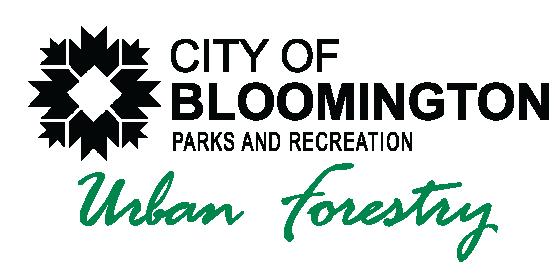

City of Bloomington Parks & Recreation
City of Bloomington Parks & Recreation
401 N. Morton St., Ste. 250 Bloomington, Indiana 47404
401 N. Morton St., Ste. 250 Bloomington, Indiana 47404
Phone: (812) 349-3716
Phone: (812) 349-3716
Fax: (812) 349-3705
Fax: (812) 349-3705
E-mail: smithh@bloomington.in.gov
E-mail: smithh@bloomington.in.gov
CC - parks@bloomington.in.gov
CC - parks@bloomington.in.gov
APPLICATION FOR TREE WORK PERMIT
APPLICATION FOR TREE WORK PERMIT
Application must be submitted seven (7) days prior to date work is set to begin.
Application must be submitted seven (7) days prior to date work is set to begin.
Applicant shall follow the standards for Tree Work as set forth in the City of Bloomington Municipal Code Chapter 12.24 Trees and Flora and in the City of Bloomington Tree Care Manual.
Applicant shall follow the standards for Tree Work as set forth in the City of Bloomington Municipal Code Chapter 12.24 and Flora and in the City of Bloomington Tree Care Manual.
Tree topping of street trees is prohibited per City of Bloomington Municipal Code 12.24.090.
Tree topping of street trees is prohibited per City of Bloomington Municipal Code 12.24.090.
SITE INFORMATION
Address of Tree(s):
SITE INFORMATION
Address of Tree(s):
Location on Property: Front Side Back
Location on Property: Front Side Back
If Exact Address Unknown, please fill in below:
If Exact Address Unknown, please fill in below:
N, S, E or W (Circle one ) side of (Street) feet
N, S, E or W (Circle one ) side of (Street)
N, S, E or W (Circle one ) from intersection of
N, S, E or W (Circle one ) from intersection of
Part of a Development Project: Yes No
Part of a Development Project: Yes No Project Name:
Name of Planning and Transportation Dept. Staff Assigned to Project:
TREE WORK TYPE
Select All Applicable:
Project Name:
Name of Planning and Transportation Dept. Staff Assigned to Project:
TREE WORK TYPE
Select All Applicable:
A. Street Tree Planting
Number of Trees:
Tree Species:
A. Street Tree Planting
Number of Trees:
B. Street Tree Removal (stump included)
Number of Trees:
B. Street Tree Removal (stump included)
Number of Trees:
Tree Species: Tree Species:
Tree Species:
Planter Name: Removal Company:
Planter Name: Removal Company:
C. Street Tree Pruning
Number of Trees:
Tree Species:
C. Street Tree Pruning D. Application of Chemicals
Number of Trees:
D. Application of Chemicals
Number of Trees:
Number of Trees:
Tree Species: Tree Species:
Certified Arborist Information
Certified Arborist Information
Tree Species:
License Applicator Information
Name: Name
License Applicator Information
Name: Name
Certification #: License #:
Contact Information:
Certification #:
Contact Information:
Description of Pruning Objective and Methods:
Description of Pruning Objective and Methods:
Contact Information:
License #:
Contact Information:
List of Chemicals and Objective Description: 1
List of Chemicals and Objective Description:
Bloomington Tree Care Manual, Fifth Edition 2024 33 1
APPLICATION FOR TREE WORK PERMIT (
APPLICANT INFORMATION
Name:
Relationship to Adjacent Property Owner: Property Owner Contractor/Arborist Property Manager Other
Mailing Address:
Phone:
If Applicant is not the Adjacent Property Owner
Adjacent Property Owner Name:
Mailing Address:
Phone:
WORK TIMELINE*
Work to Begin:
*Permit valid only during this period unless extended by Department.
Email:
Email:
Work To End:
The applicant named above shall fully complete and sign this form. Unless otherwise approved by the Bloomington Parks and Recreation Department, this application must be submitted at least 7 days prior to date work is to begin. The permit is not val id until signed by the Department. Please keep a copy of the signed permit for your records. The applicant or his agent is solely responsible for providing notice as required by state law to all underground utilities before commencing an excavation. By signing below I affirm that the information provided above is true. I agree to abide by any and all conditions imposed bel ow. I agree to indemnify and hold harmless the City, the Board, and the officers, agents and employees of the City and the Board from any and all claims, demands, damages, costs, expenses or other liability arising out of the reckless or negligent act or omissi on or any willful misconduct on the part of the applicant or any contractors retained by the applicant for work under this permit. If I disagree with the denial of this permit or any conditions imposed, I may appeal in writing within 10 days to the Board of Park Commissioners.
Signature:
Date Received:
Findings (if different than in information):
Signed Date:
Do Not Write Below Staff Use Only
Conditions for approval/Reasons for Rejection:
Approved Denied
Signature:
34 Bloomington Tree Care Manual, Fifth Edition 2024 2
Cont.)
Signed Date: Bloomington Parks and Recreation Department
Resources
Tree planting resources: https://www.arborday.org/trees/planting/ https://www.treesaregood.org/treeowner/plantingatree https://www.extension.purdue.edu/extmedia/fnr/fnr-433-w.pdf
Website for tree ID: https://www.arborday.org/trees/whattree/ https://www.pfw.edu/microsites/native-trees/the-native-trees/index-of-trees https://mortonarb.org/plant-and-protect/trees-and-plants/
Find a Certified Arborist www.isa-arbor.com
Planting Trees in Landscapes University of Florida http://bit.ly/1JMUxGh
ISA provided website to find arborists, verify credentials and find more tree care information https://www.treesaregood.org/
The Arbor Day Foundation https://www.arborday.org/
Purdue Landscape Report- Articles relating to flora of all kinds, also ‘plant doctor’ https://www.purduelandscapereport.org/
Indiana Big Tree Registry https://www.in.gov/dnr/forestry/forestry-publications-and-presentations/indiana-big-tree-register/
Purdue’s Native River Walk Index of Trees https://www.pfw.edu/microsites/native-trees/the-native-trees/index-of-trees
Purchase seedlings from DNR https://www.in.gov/dnr/forestry/tree-seedling-nurseries/
Fact sheets about Tree Species (listed by Latin name) https://hort.ifas.ufl.edu/database/trees/trees_scientific.shtml
The Morton Arboretum Trees https://mortonarb.org/plant-and-protect/trees-and-plants/
Indiana Plant Atlas Map from Butler University https://indiana.plantatlas.usf.edu/
Monroe County Identify and Reduce Invasive Species (MCIRIS) https://www.mc-iris.org/
City of Bloomington Tree Inventory https://bloomingtonin.treekeepersoftware.com/
IU Bloomington Campus Tree Inventory https://iu-vpcpf.maps.arcgis.com/apps/webappviewer/index.html?id=55754d1a95be4304b643c73e95f5409
BMC 20.04.080 (Unified Development Ordinance)
https://library.municode.com/in/bloomington/codes/code_of_ordinances?nodeId=TIT20UNDEOR CH20.04DESTIN_20.04.080LABUFE
BMC 12.24 (Tree Ordinance)
https://library.municode.com/in/bloomington/codes/code_of_ordinances?nodeId=TIT12STSISTSE_CH12.24TRFL
Bloomington Tree Care Manual, Fifth Edition 2024 35
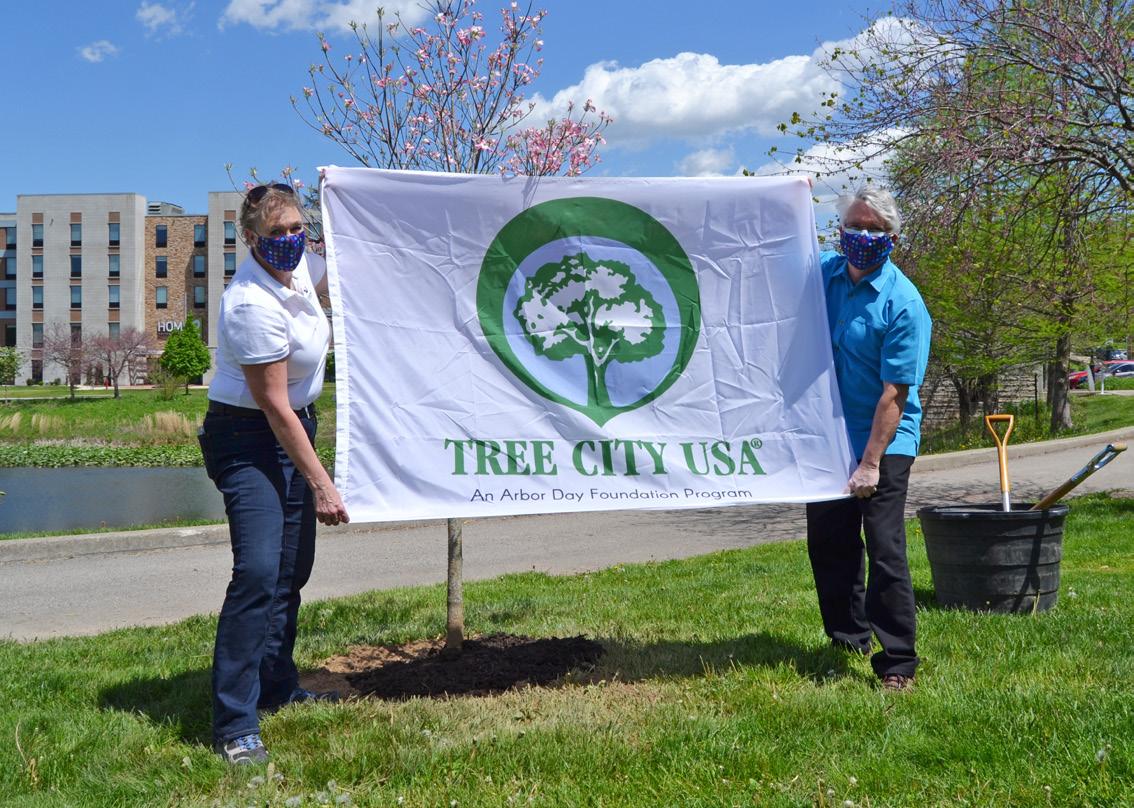
Arbor Day 2021
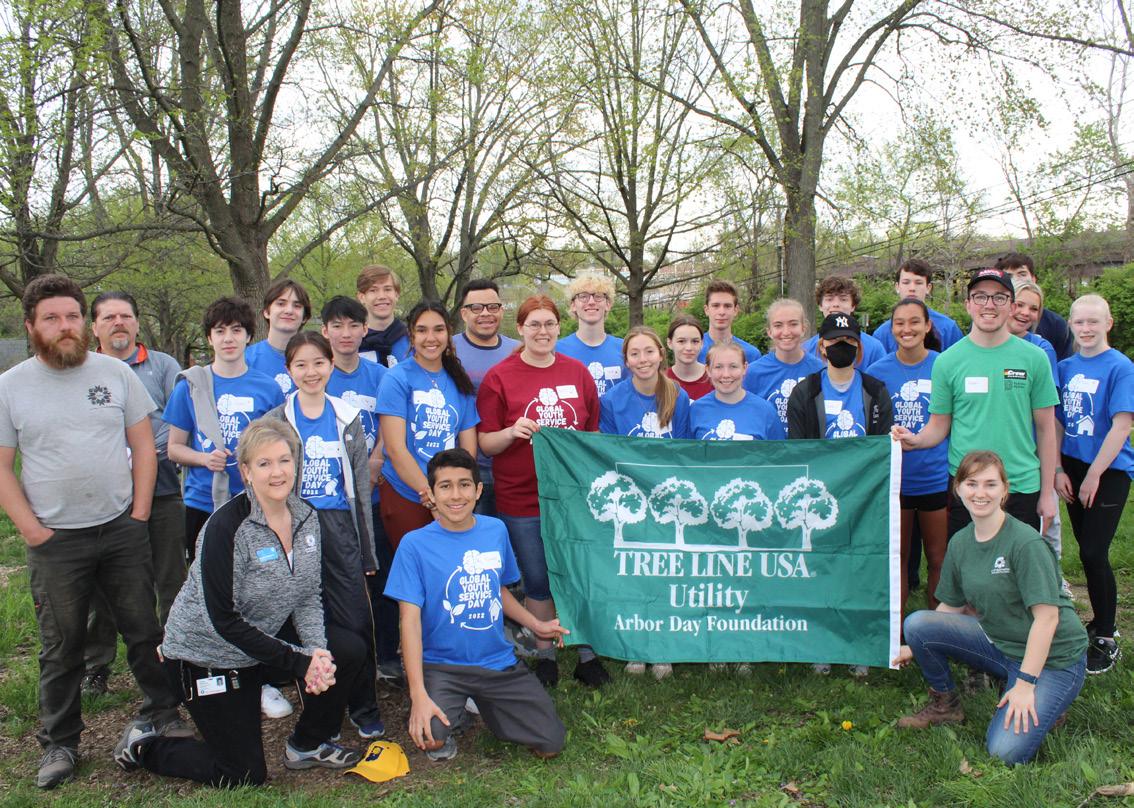
Day 2022

Arbor Day 2022
Butler Park
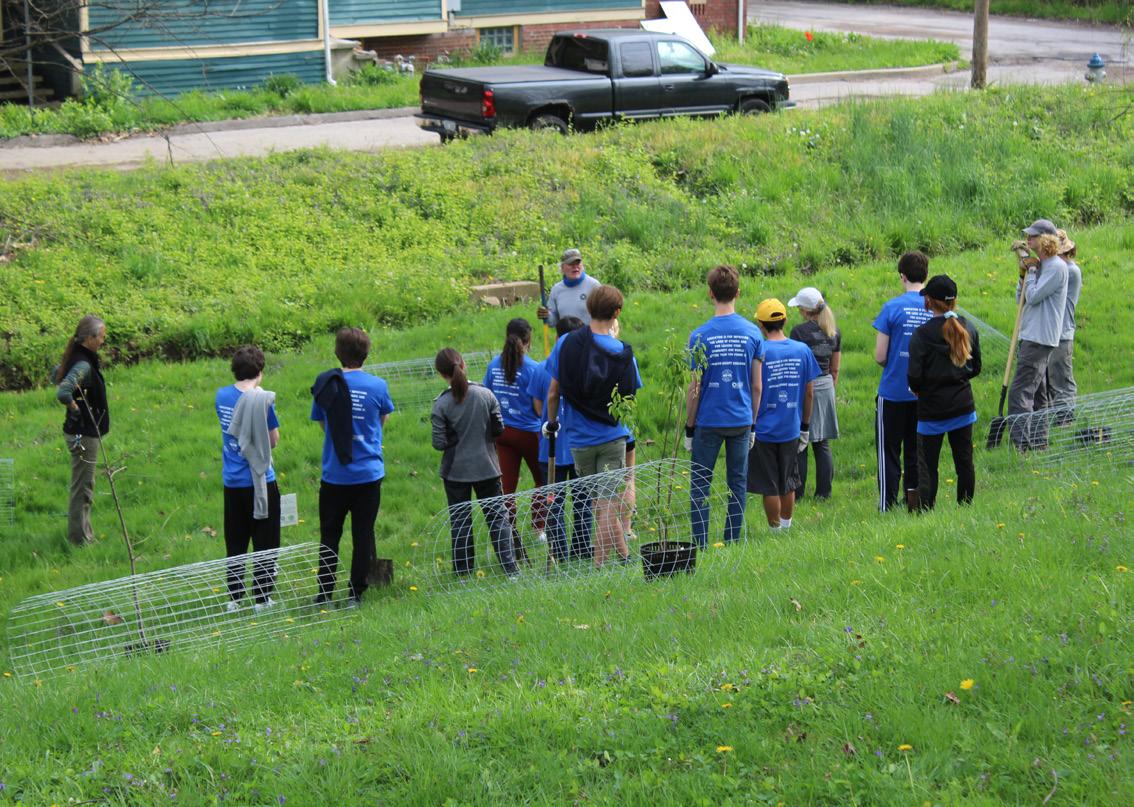
Arbor Day 2023
Switchyard Park
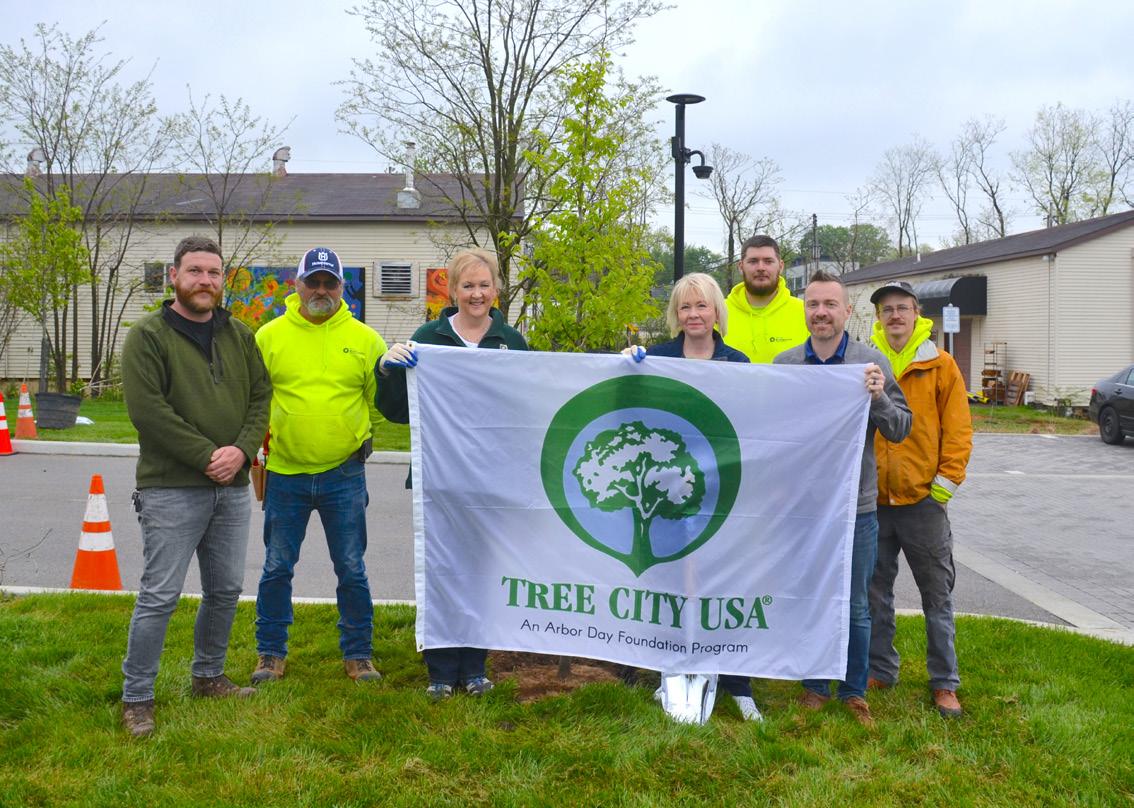 Miller-Showers Park
Arbor
Butler Park
Miller-Showers Park
Arbor
Butler Park



























 Miller-Showers Park
Arbor
Butler Park
Miller-Showers Park
Arbor
Butler Park